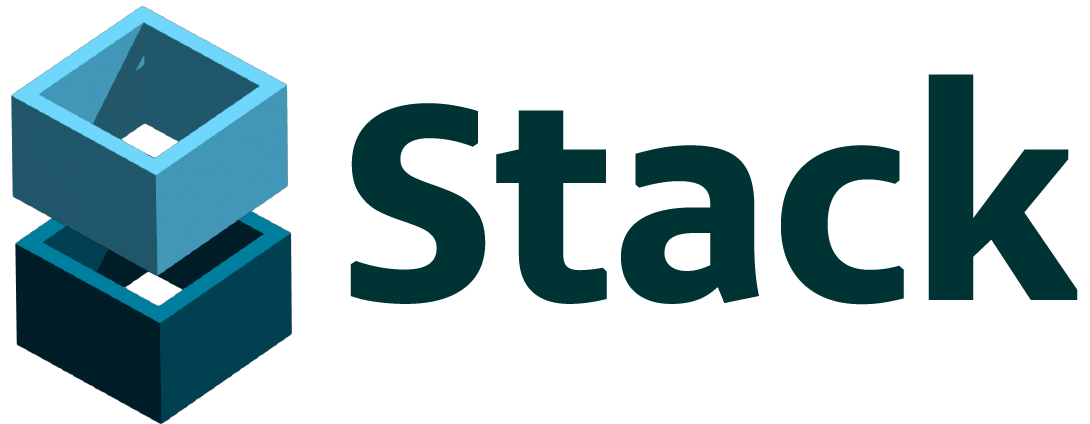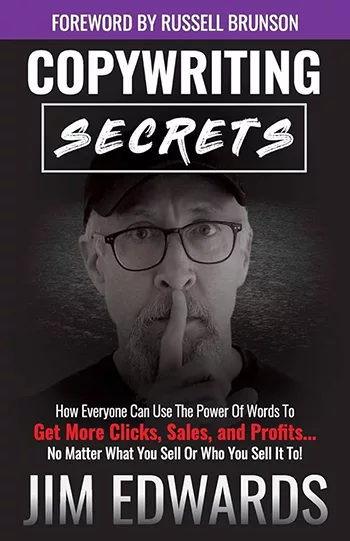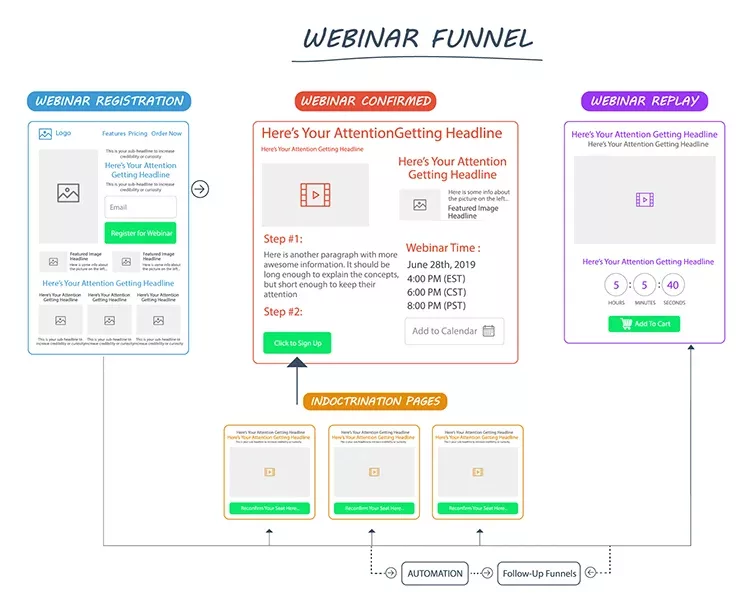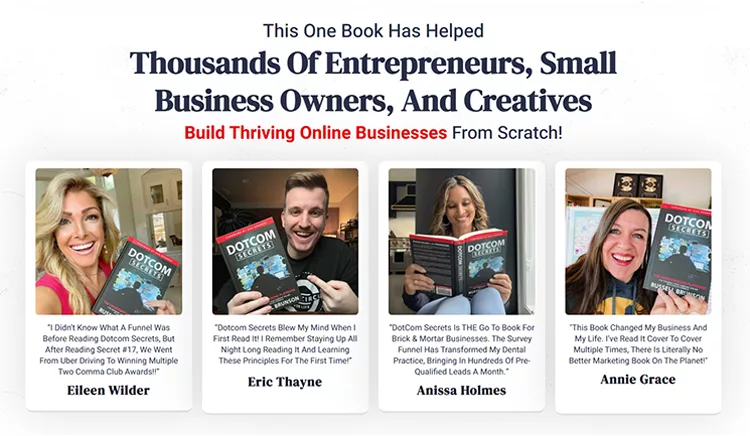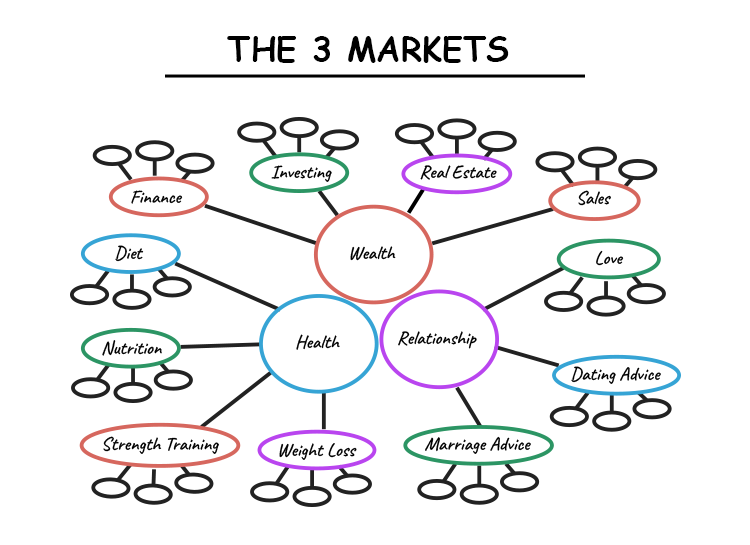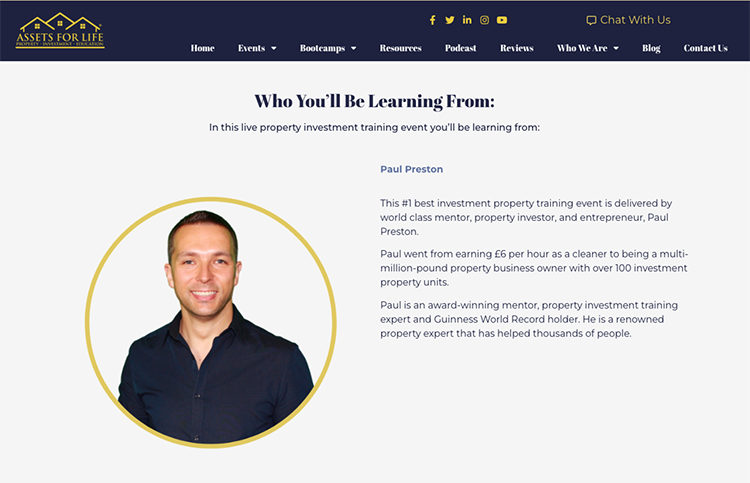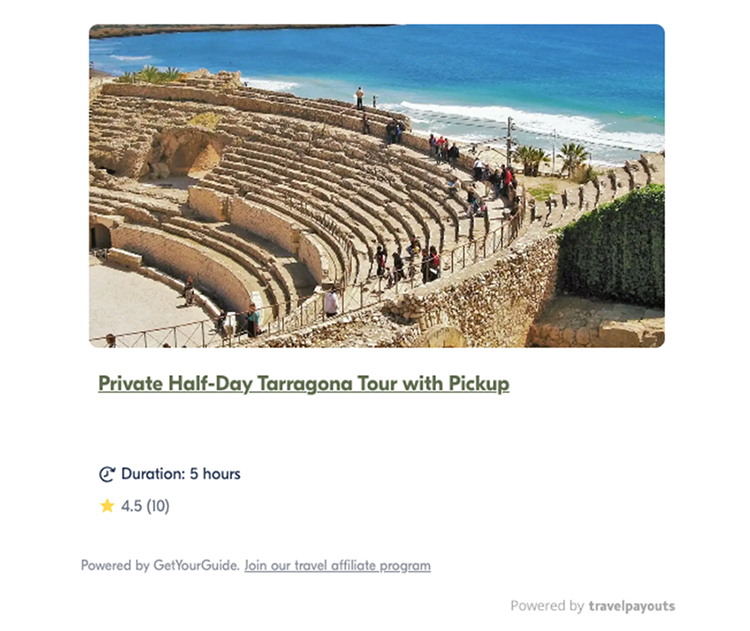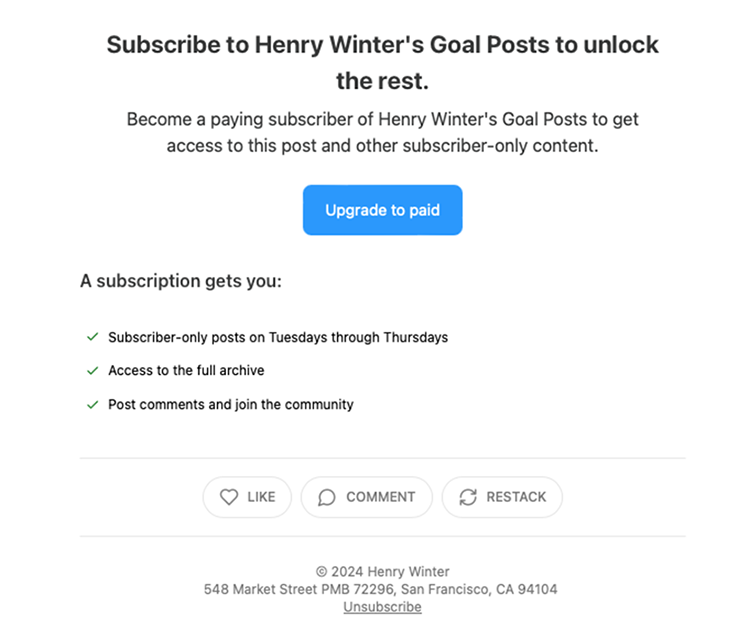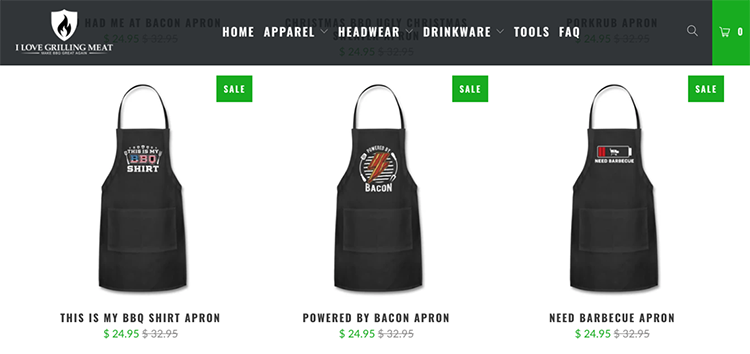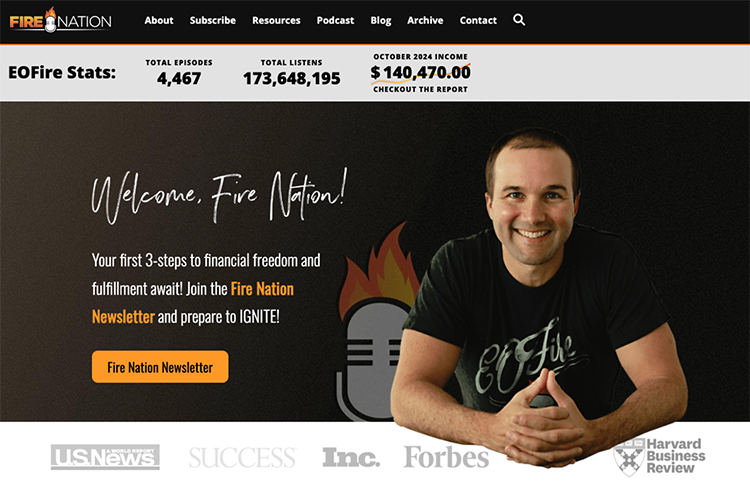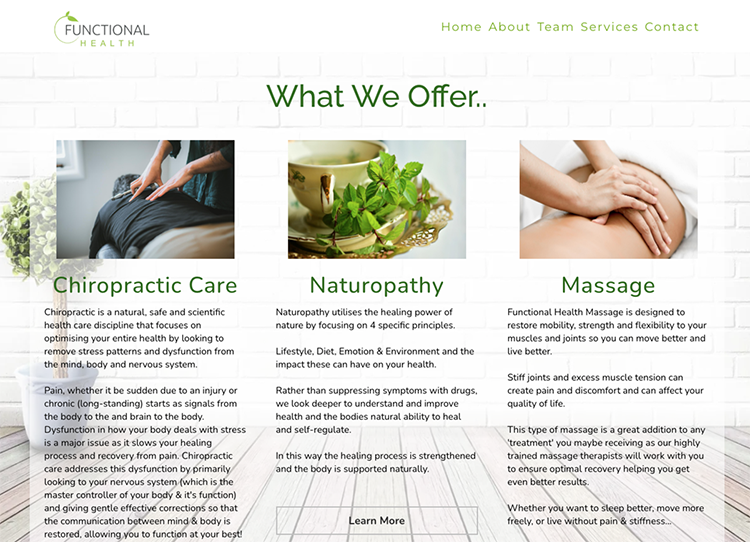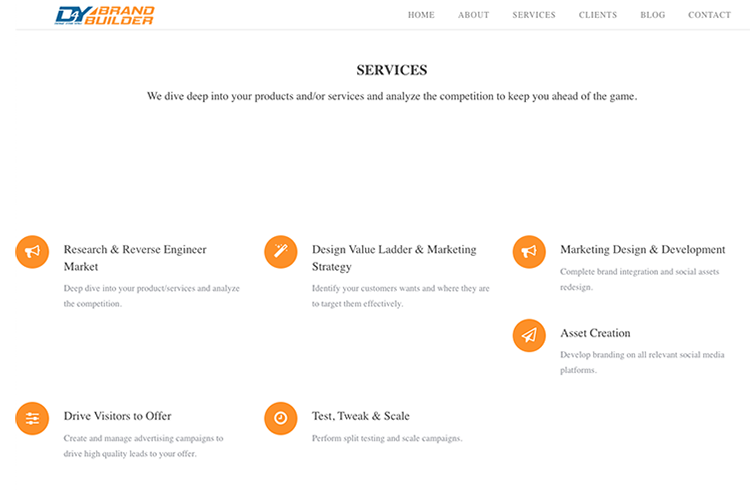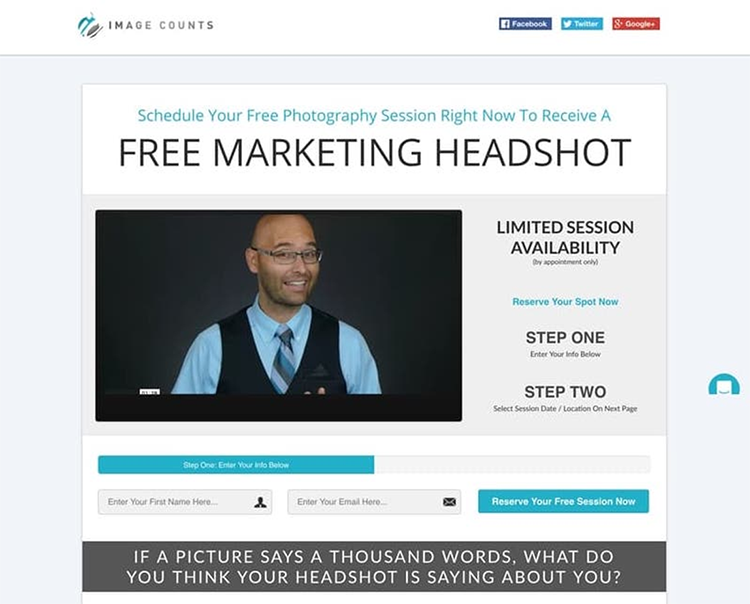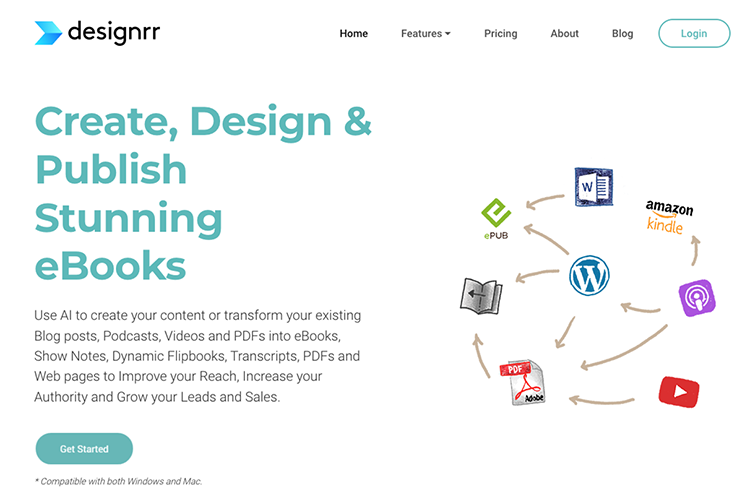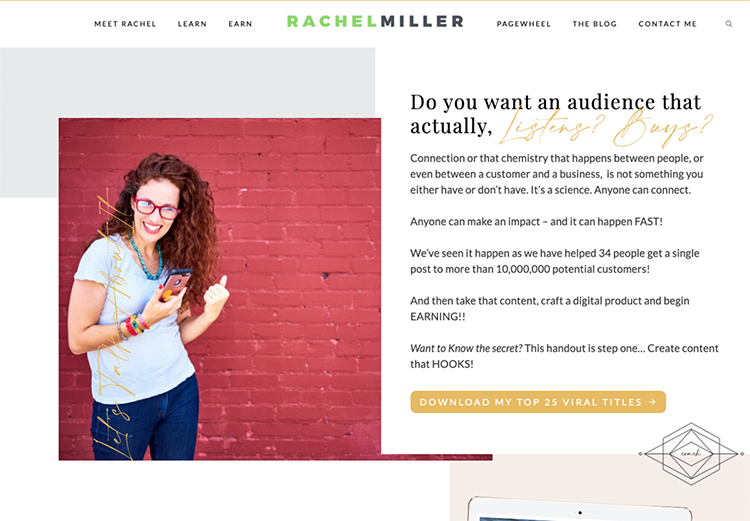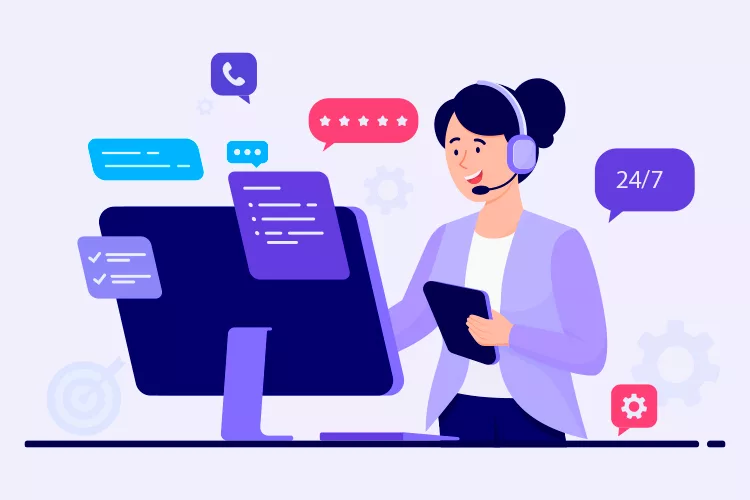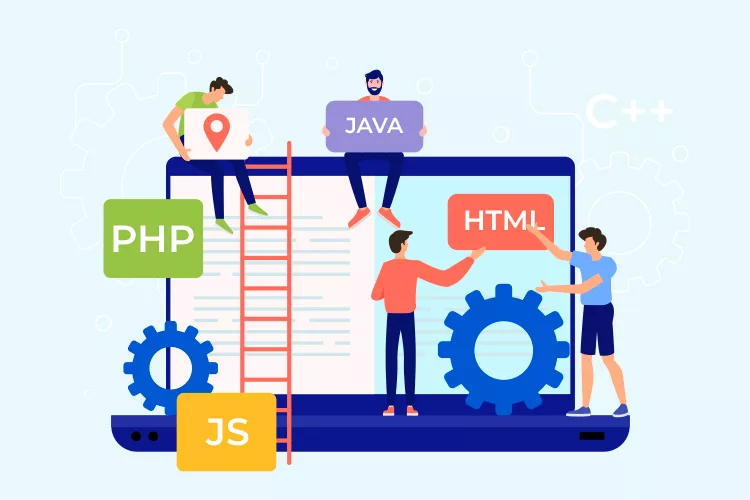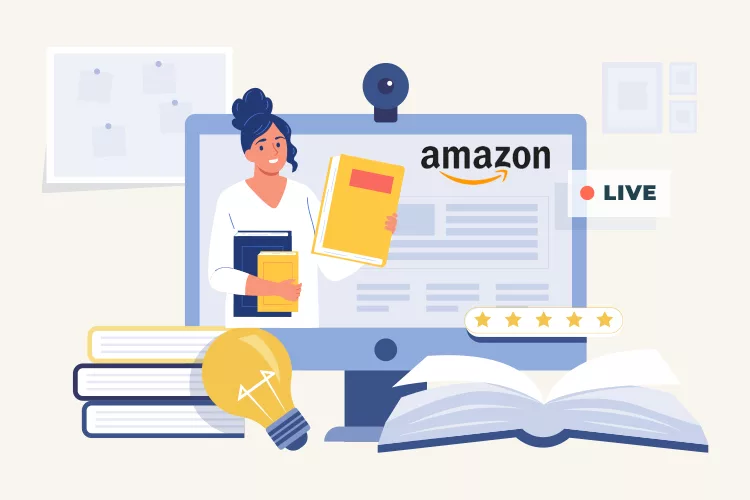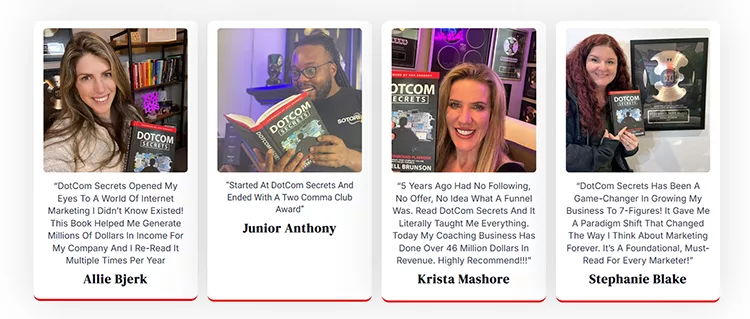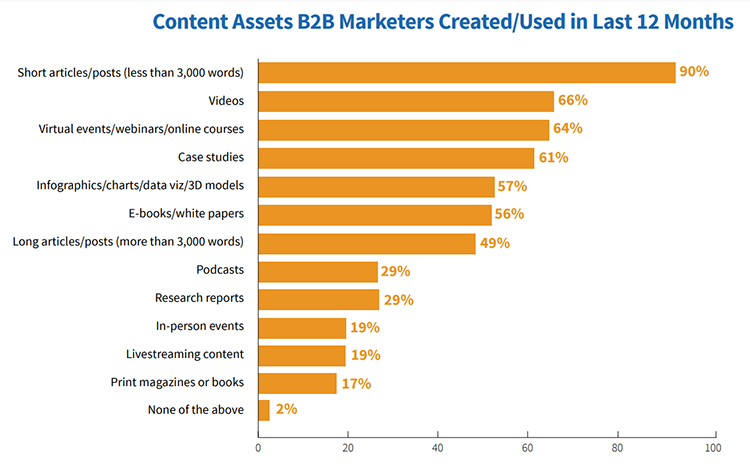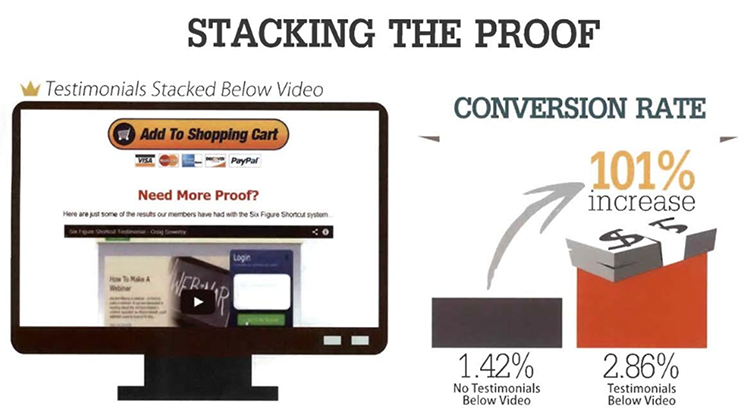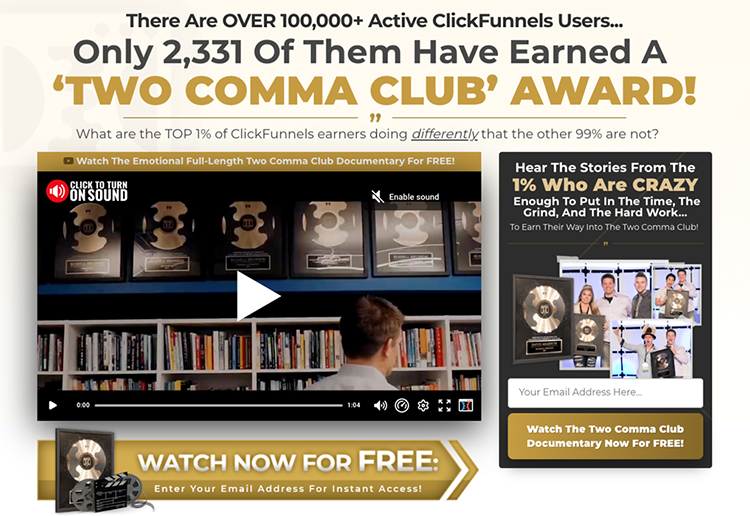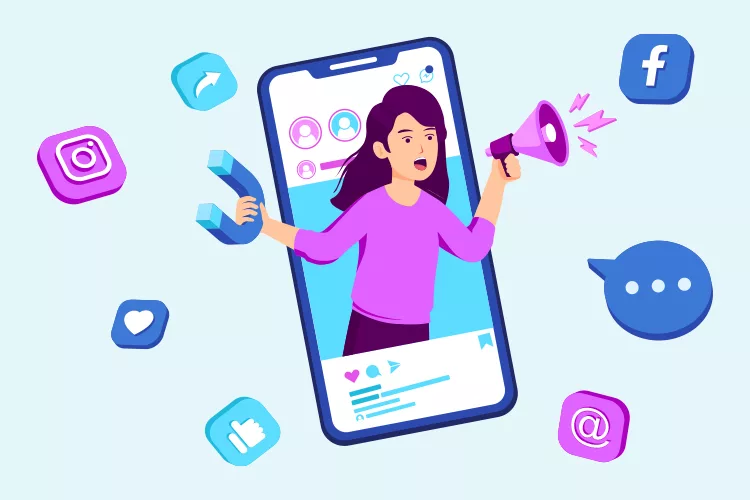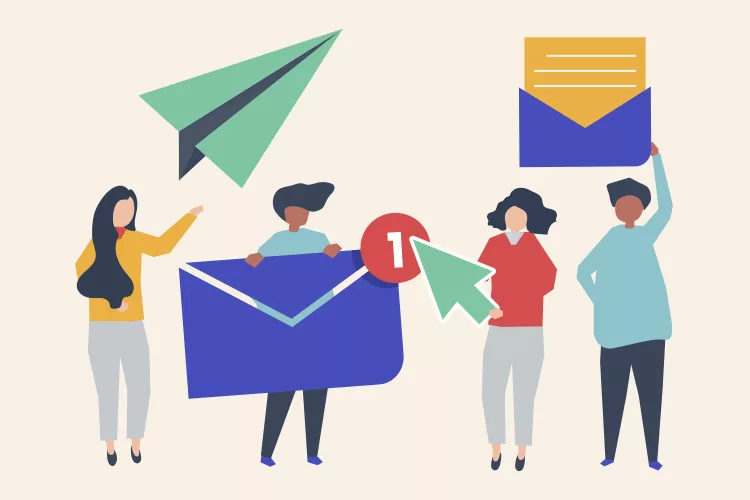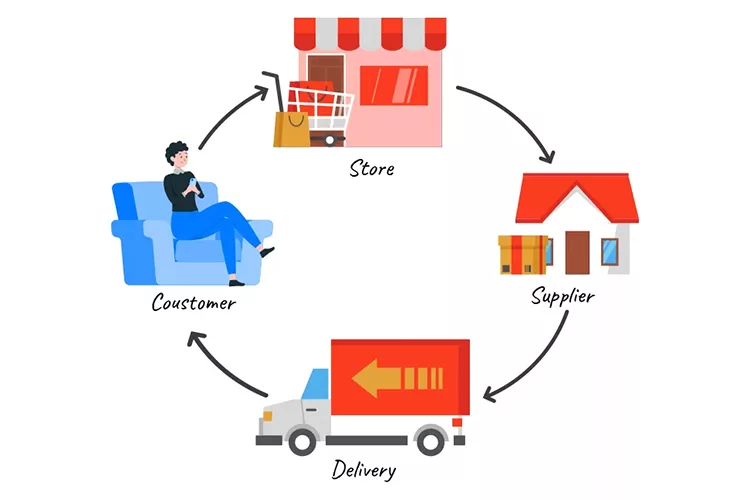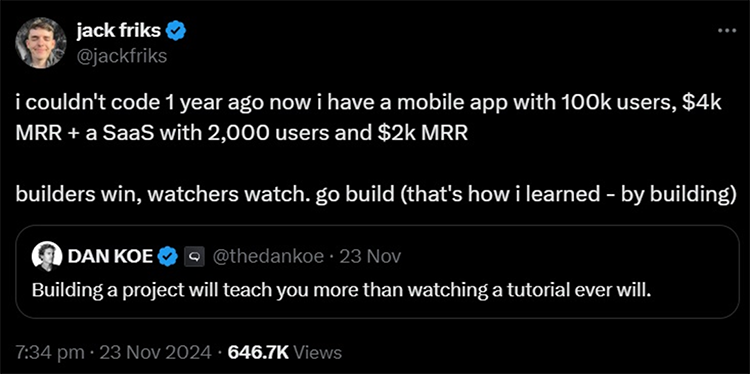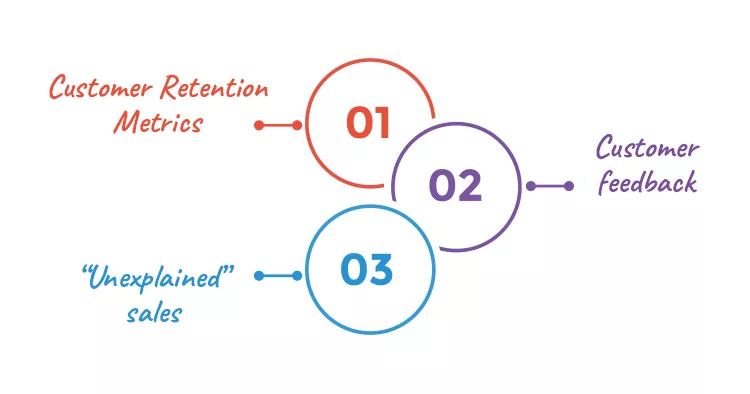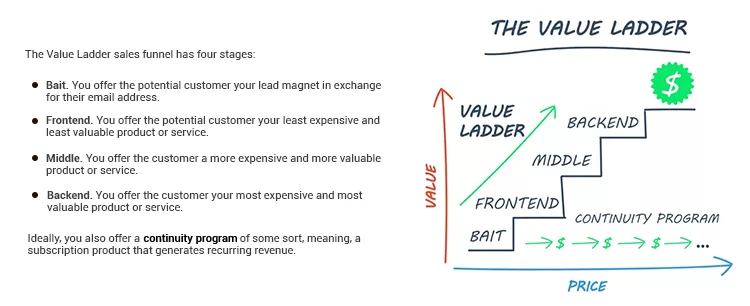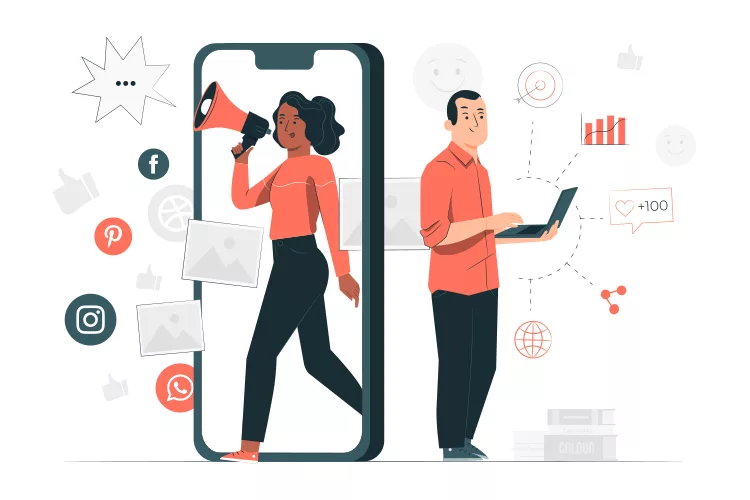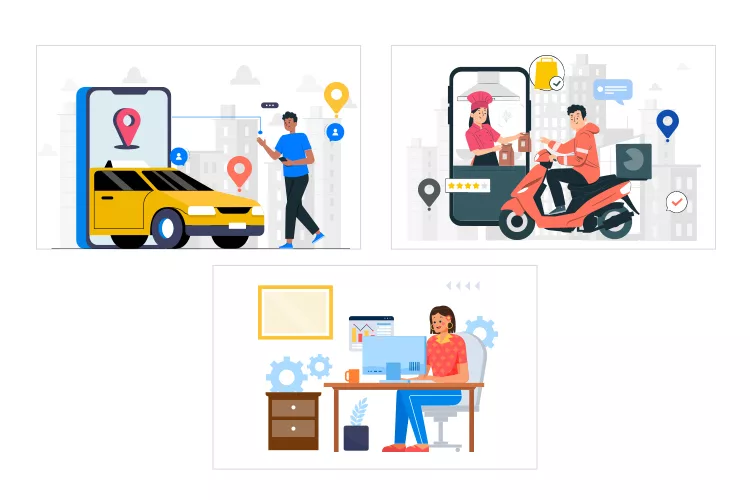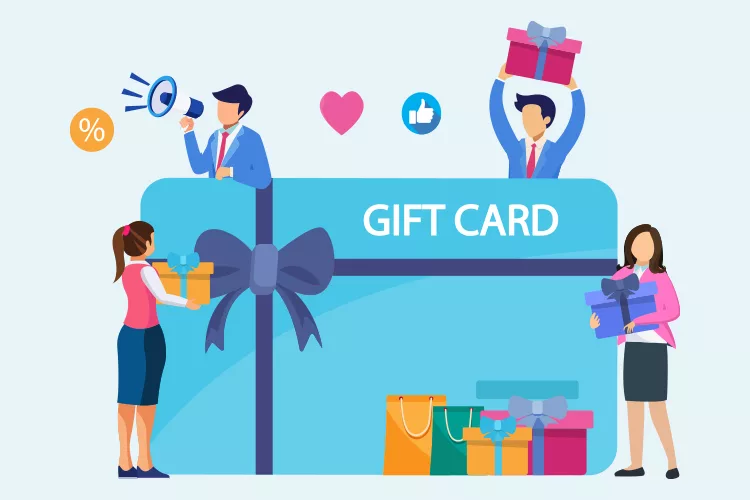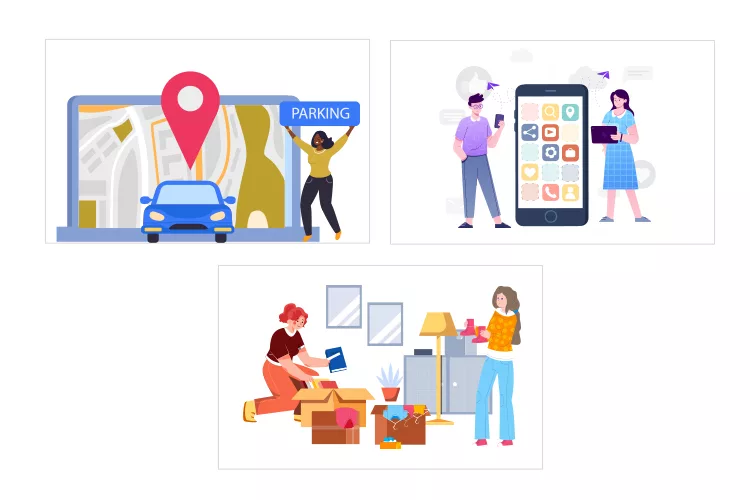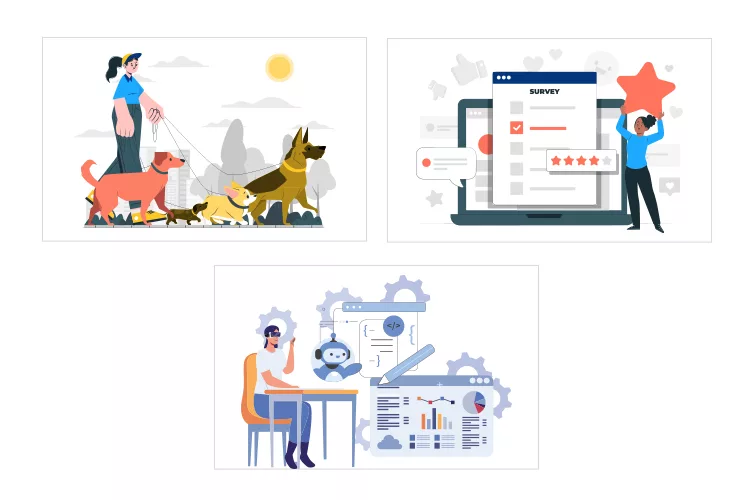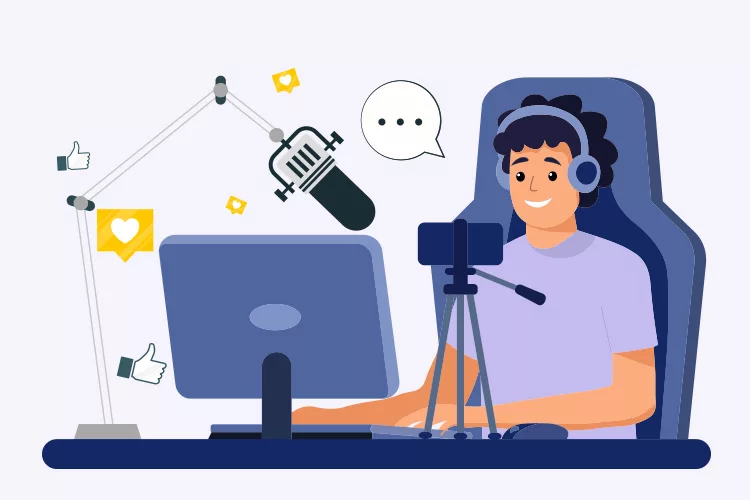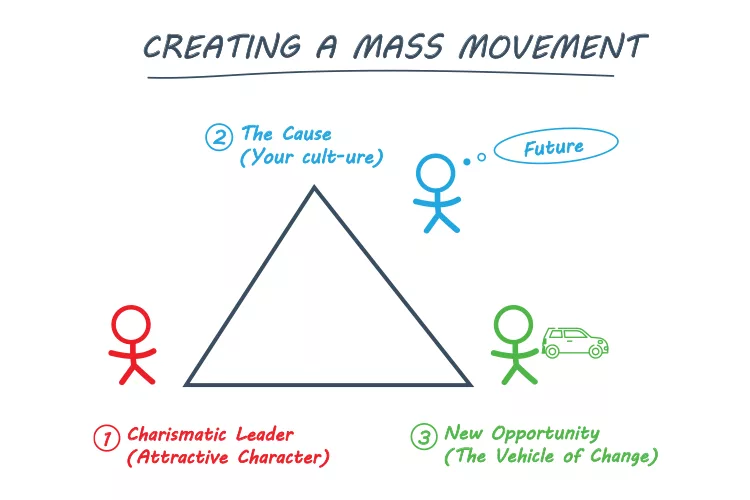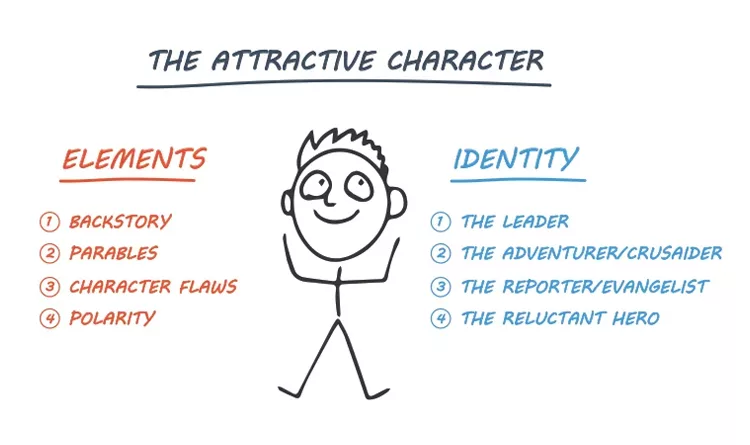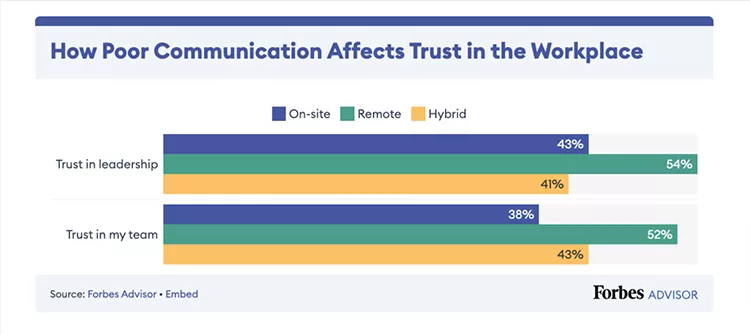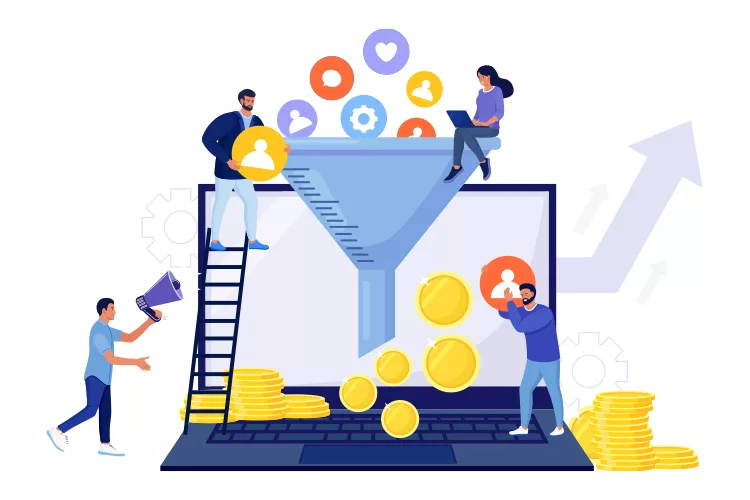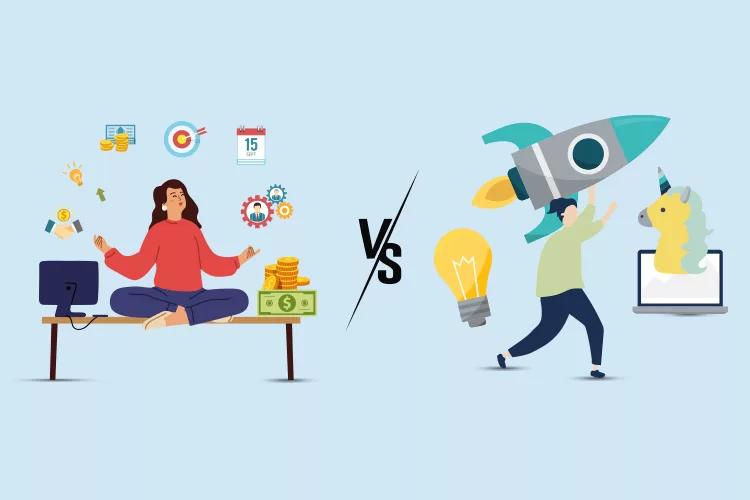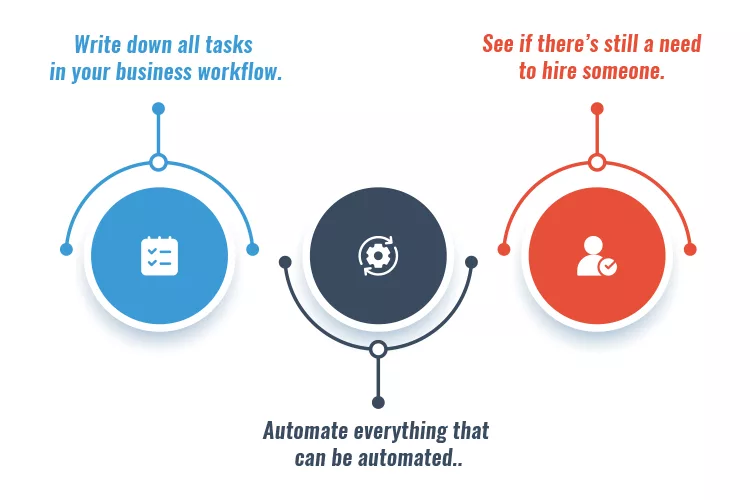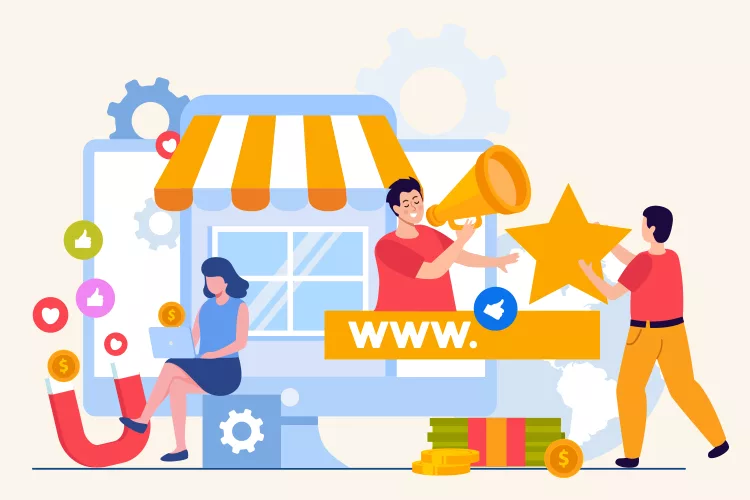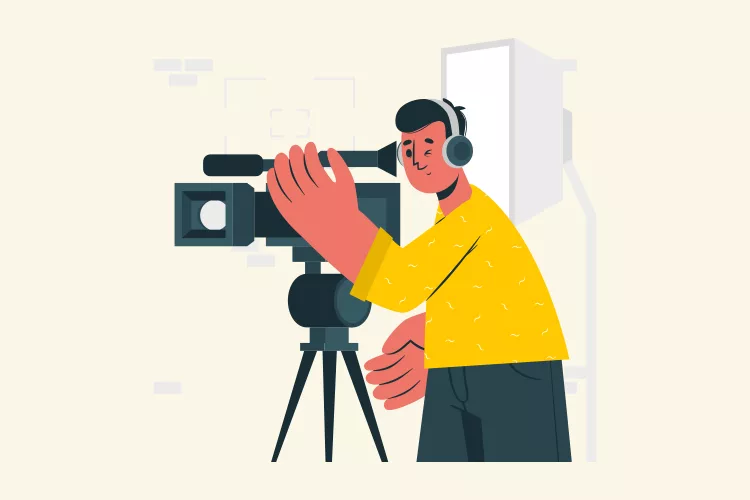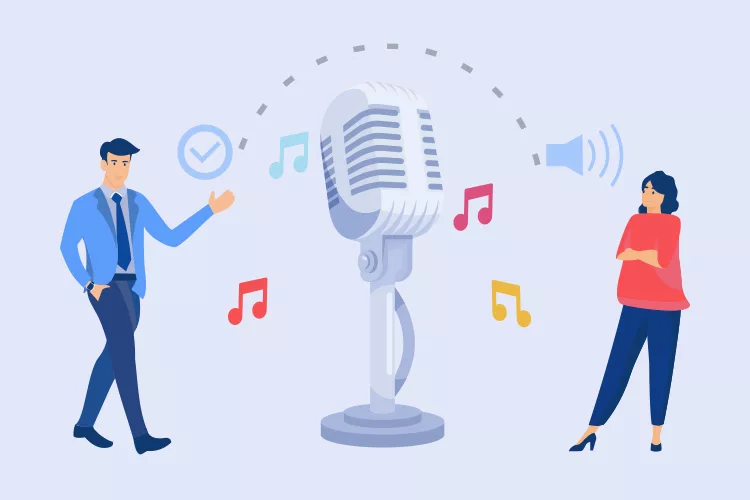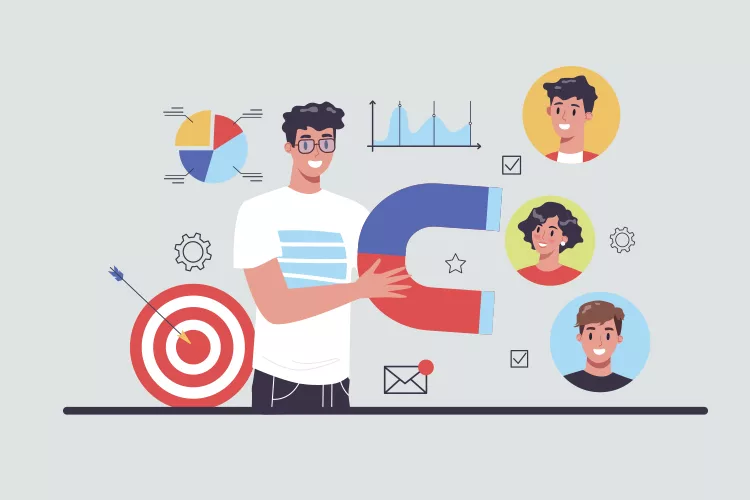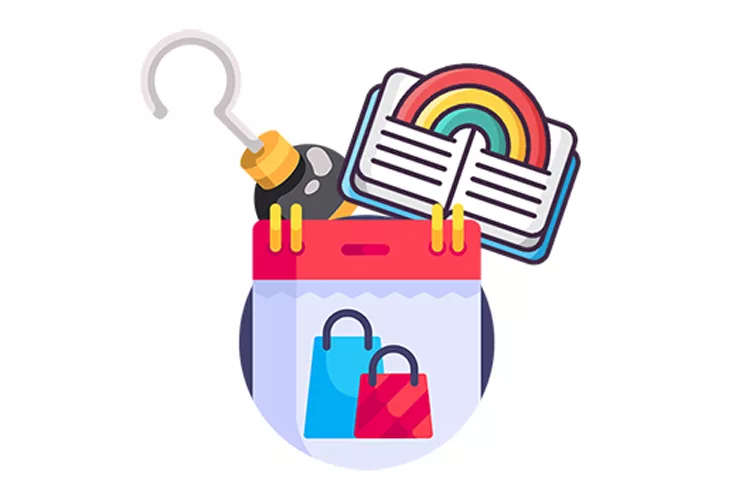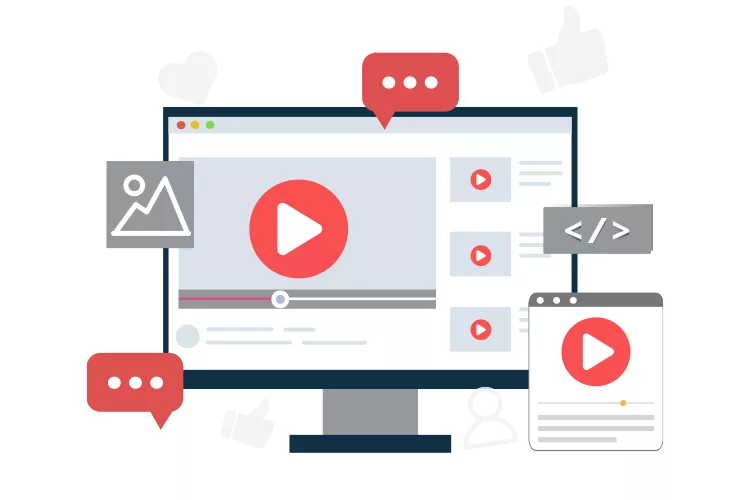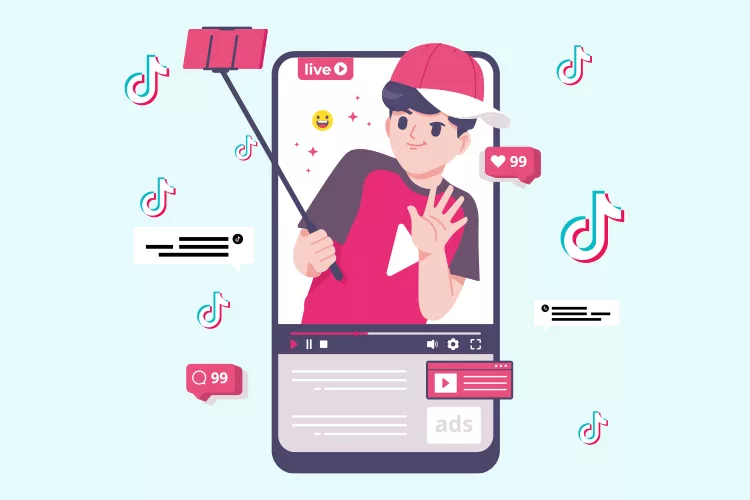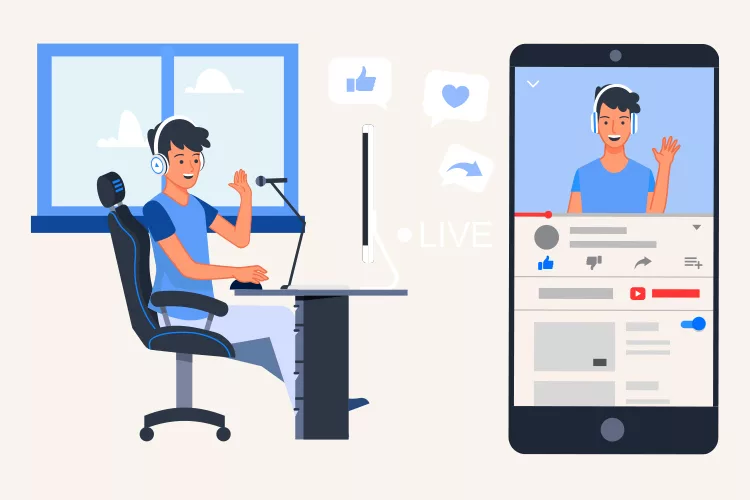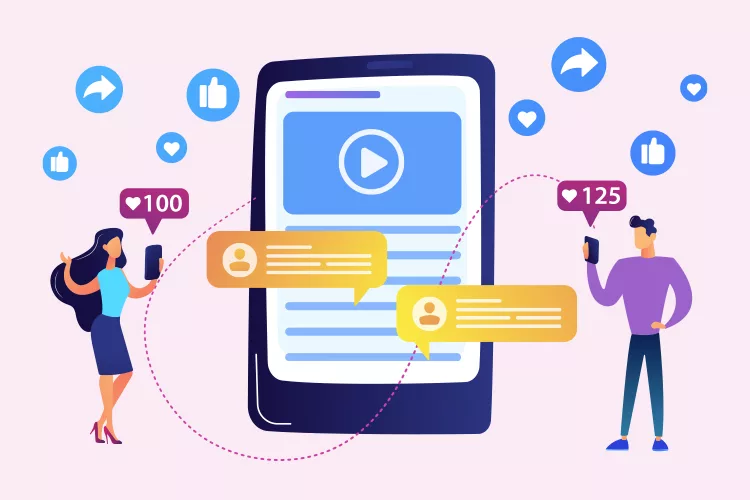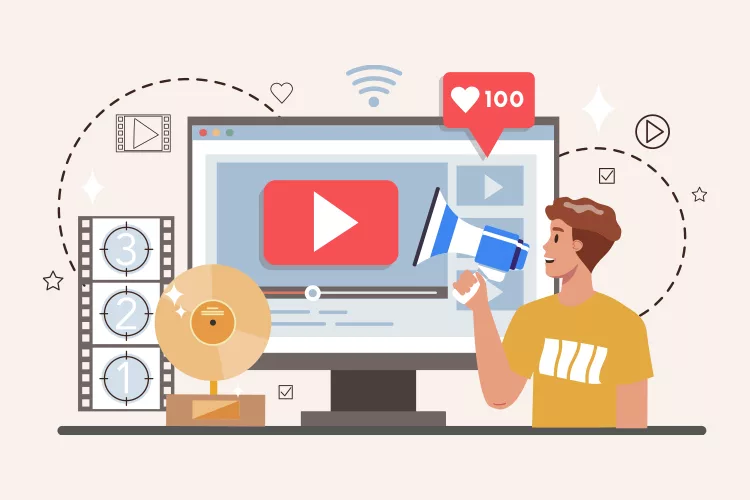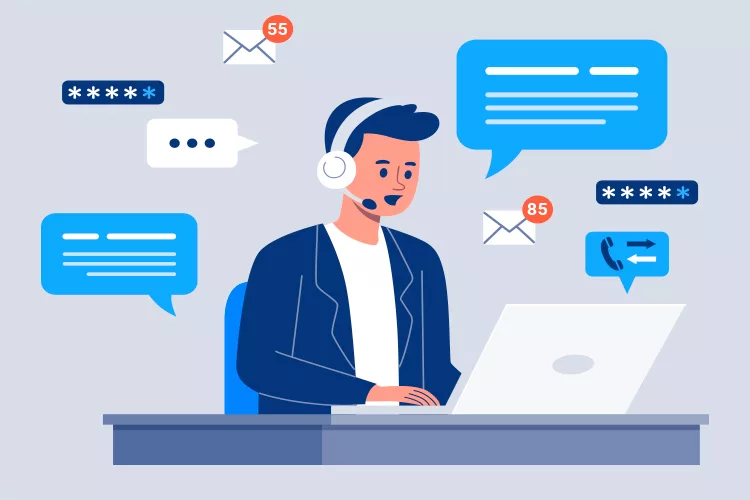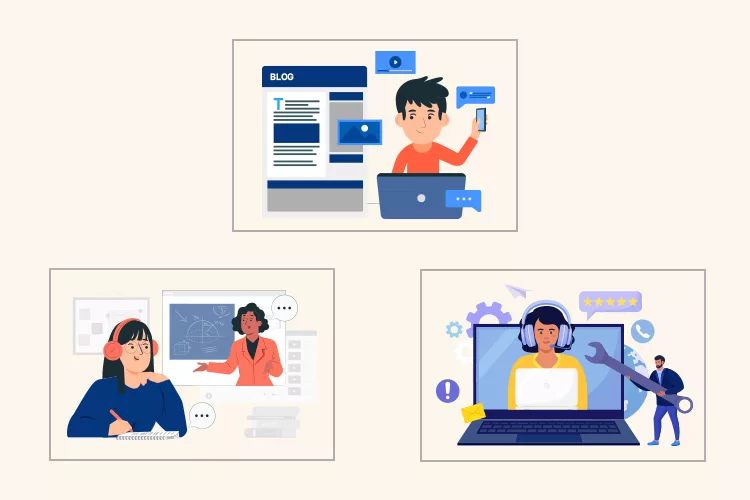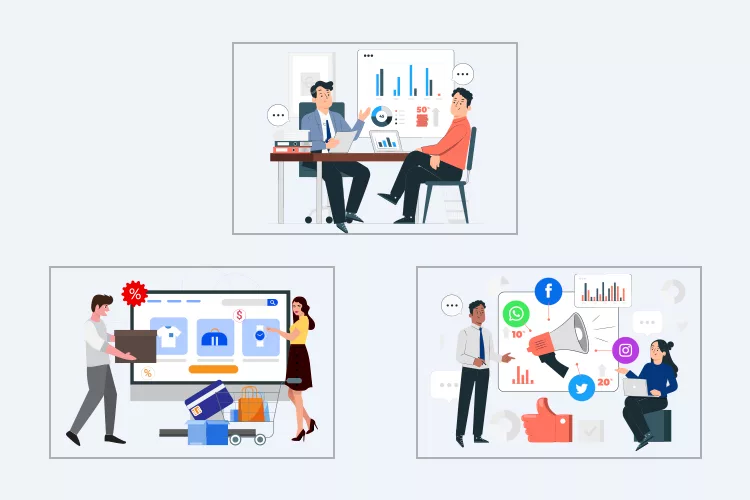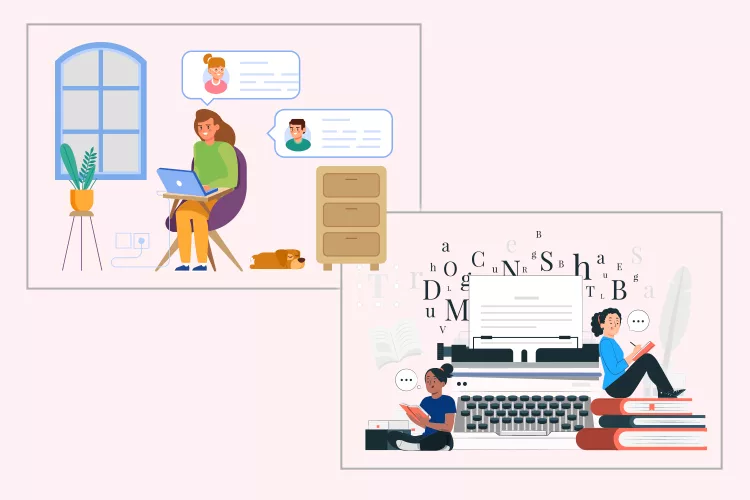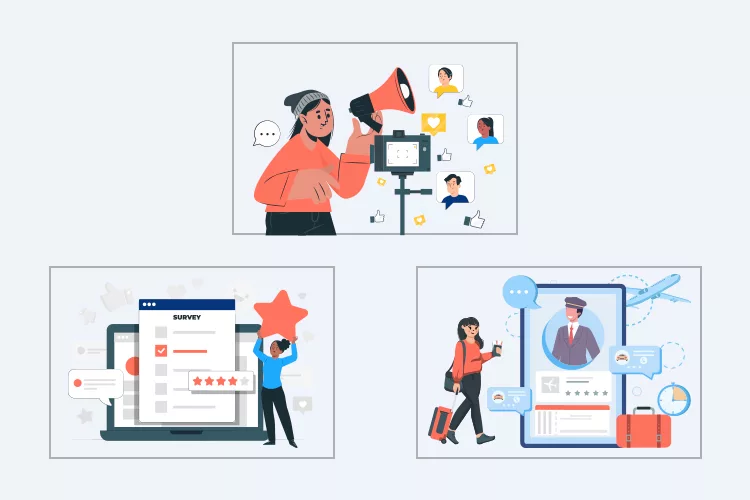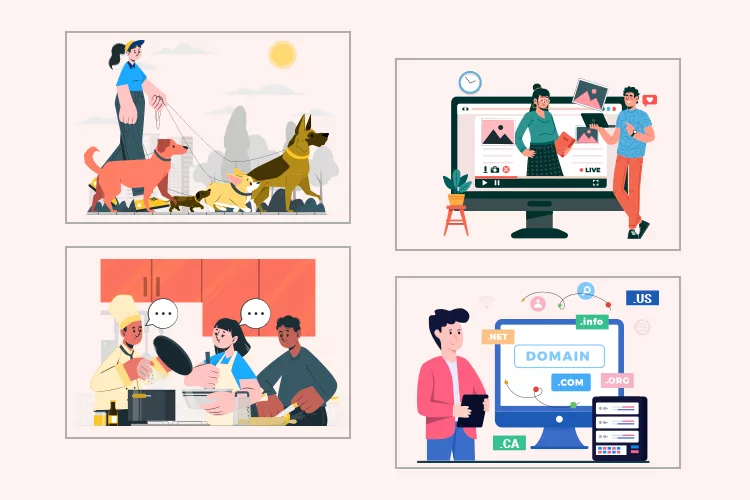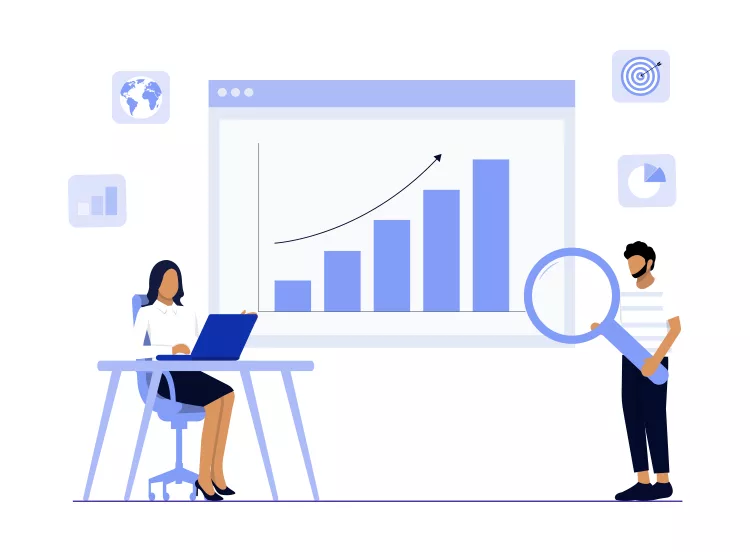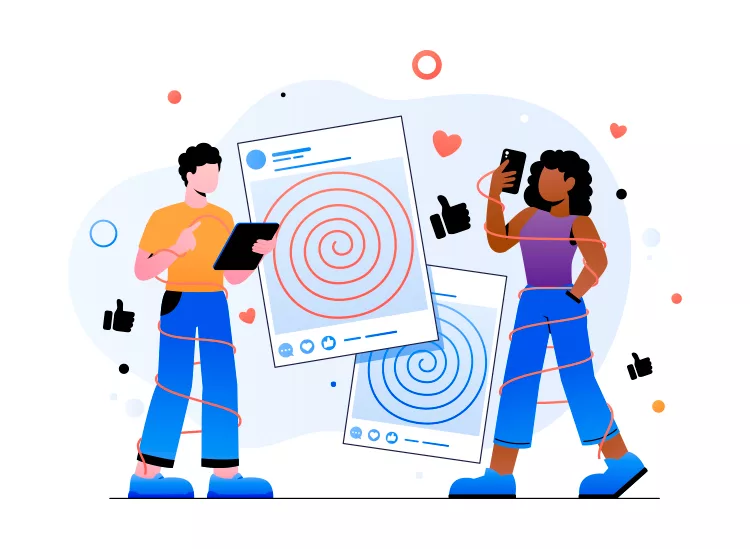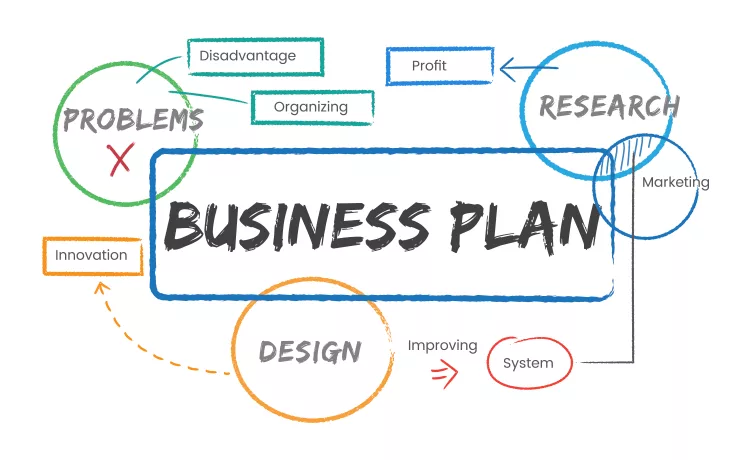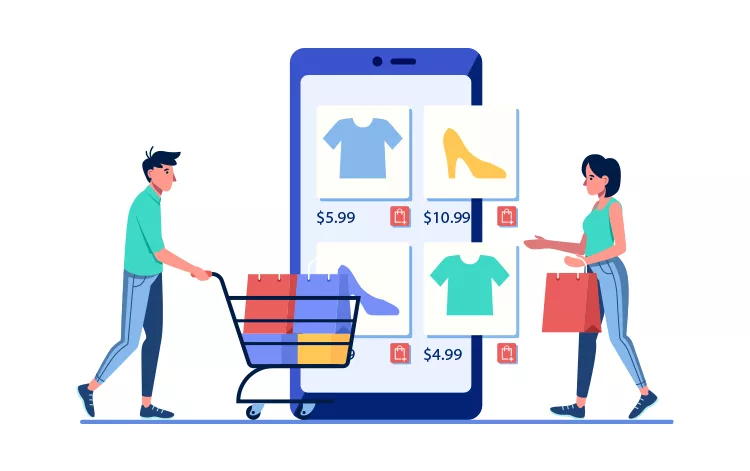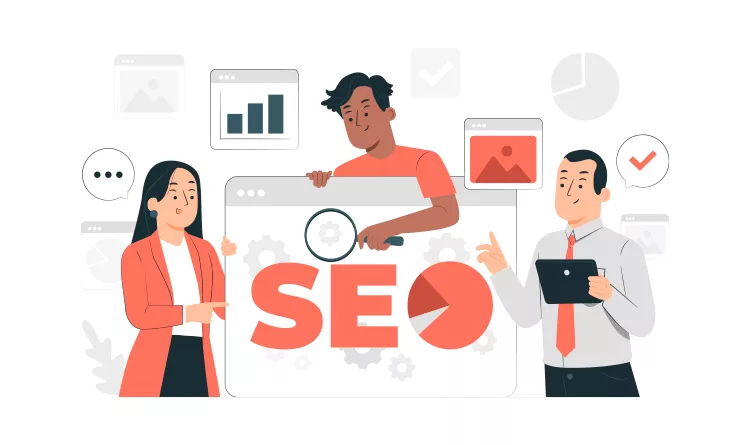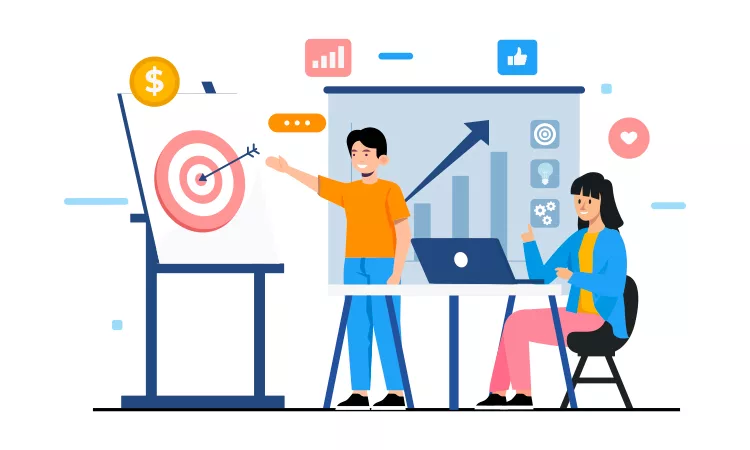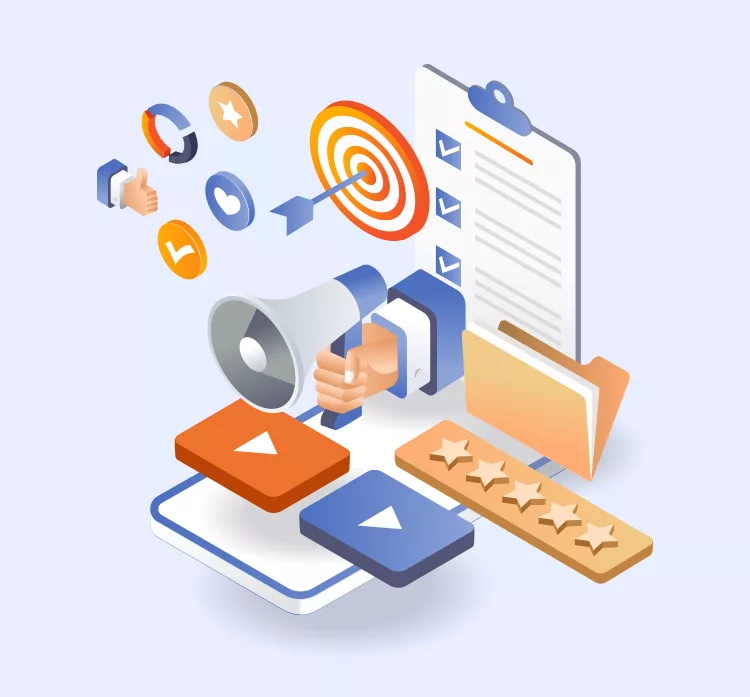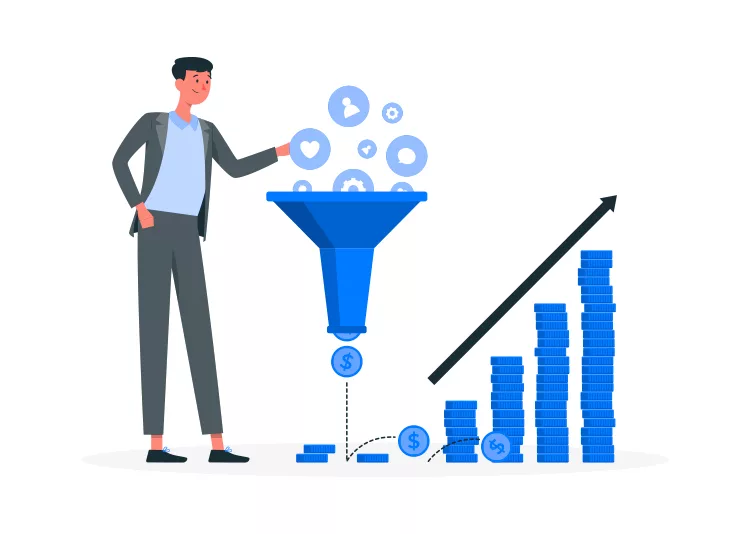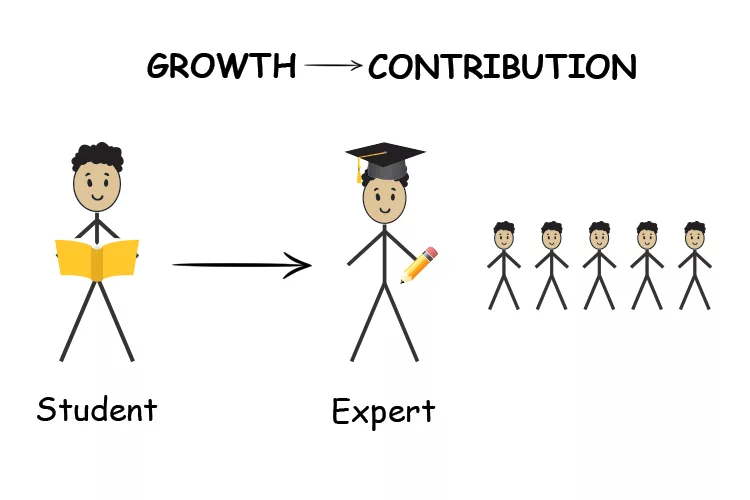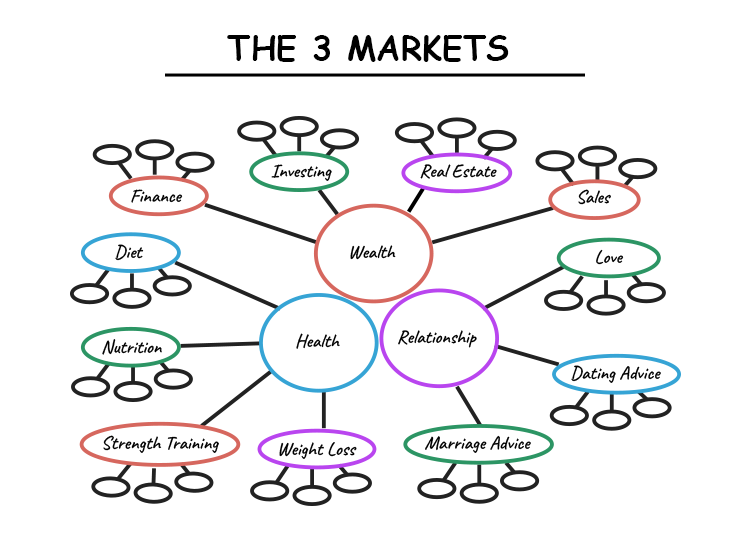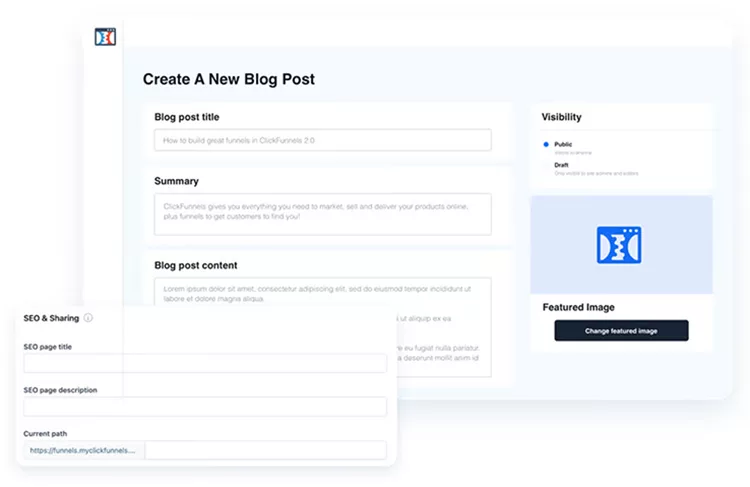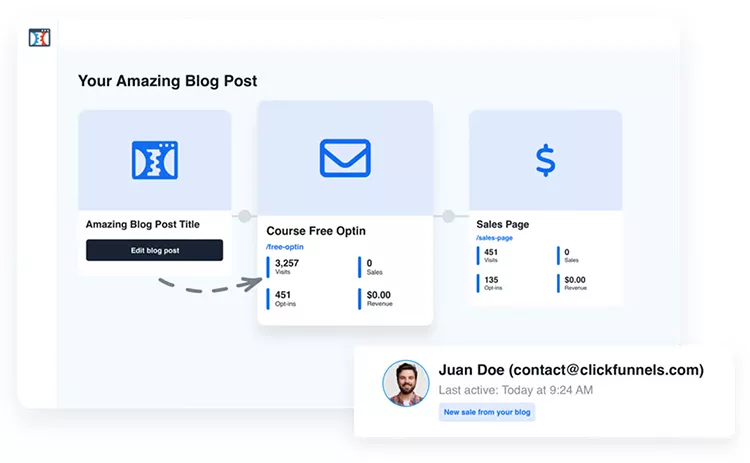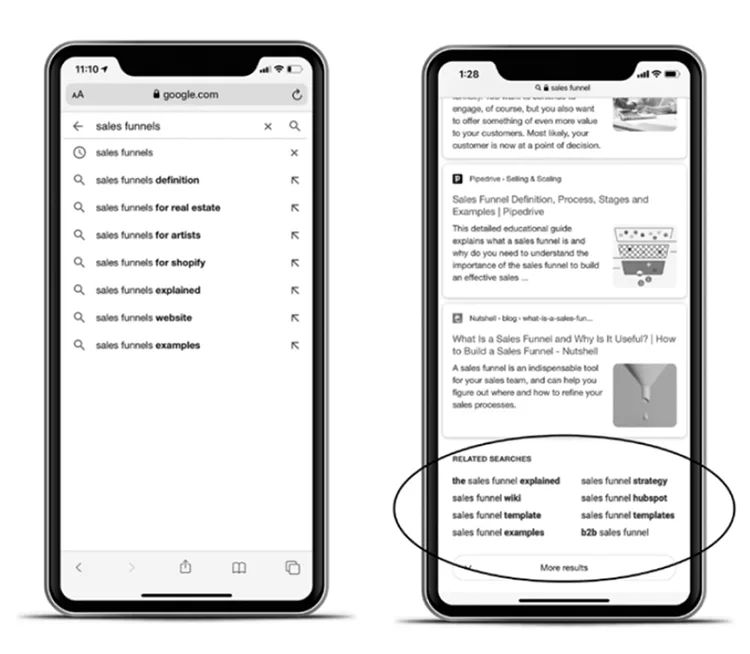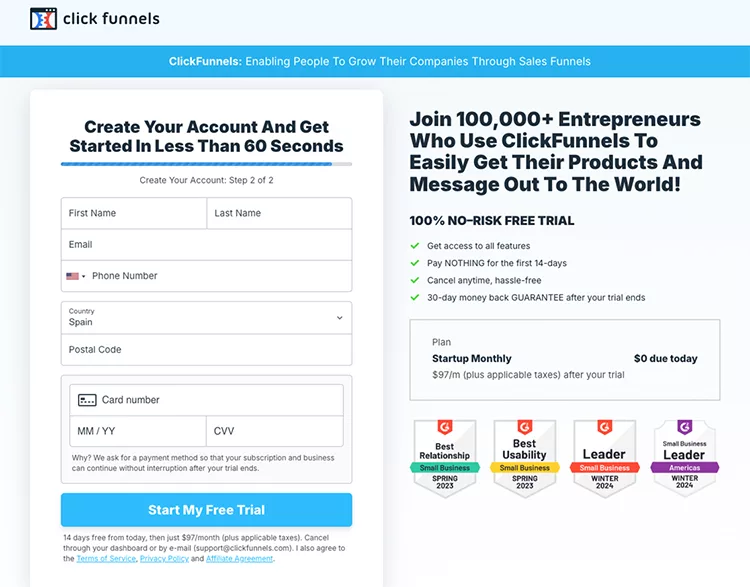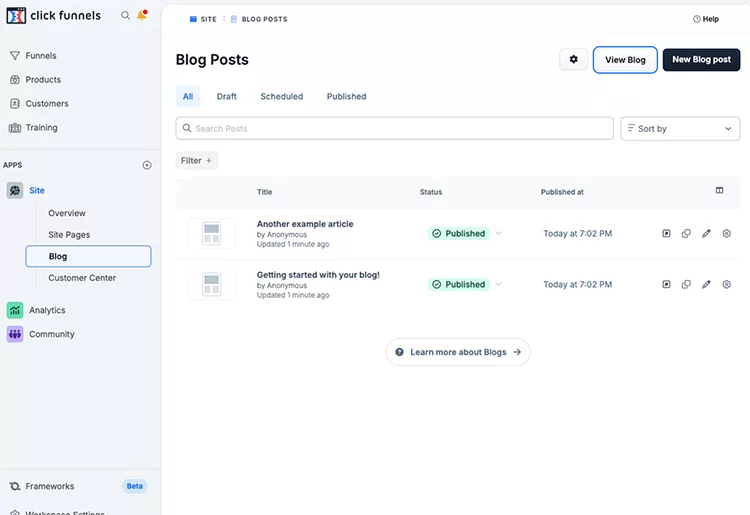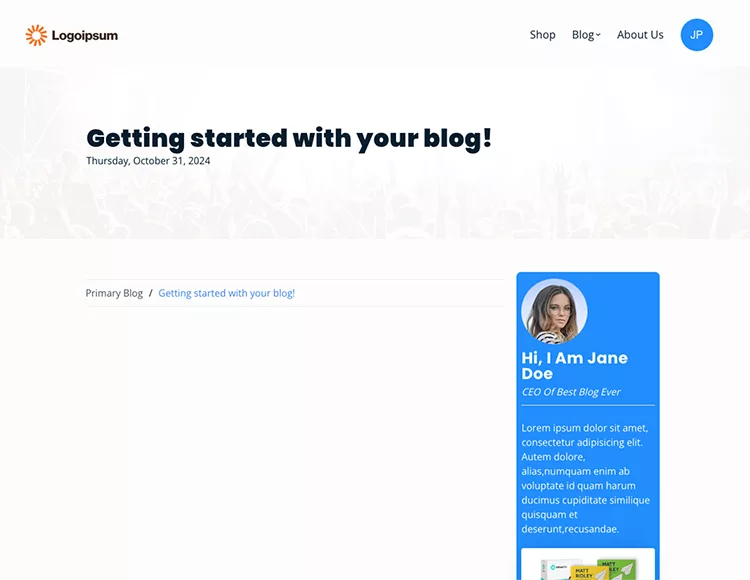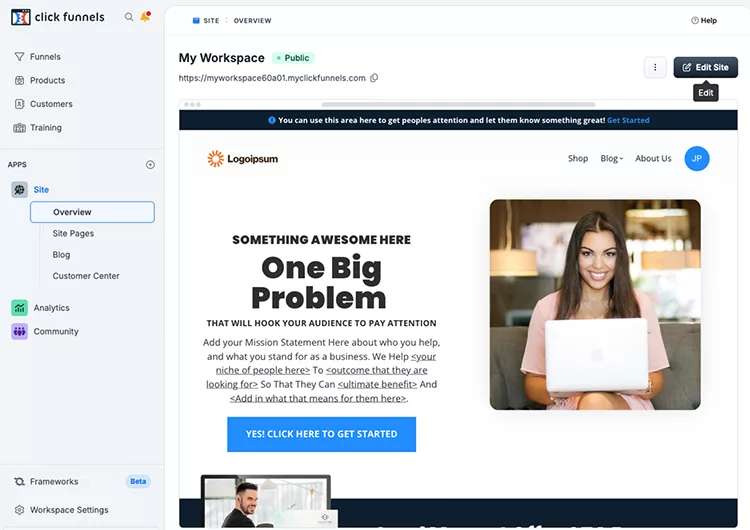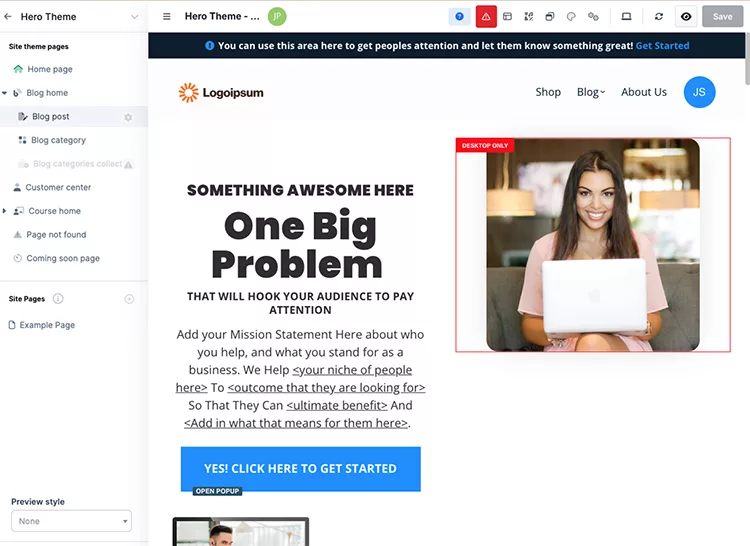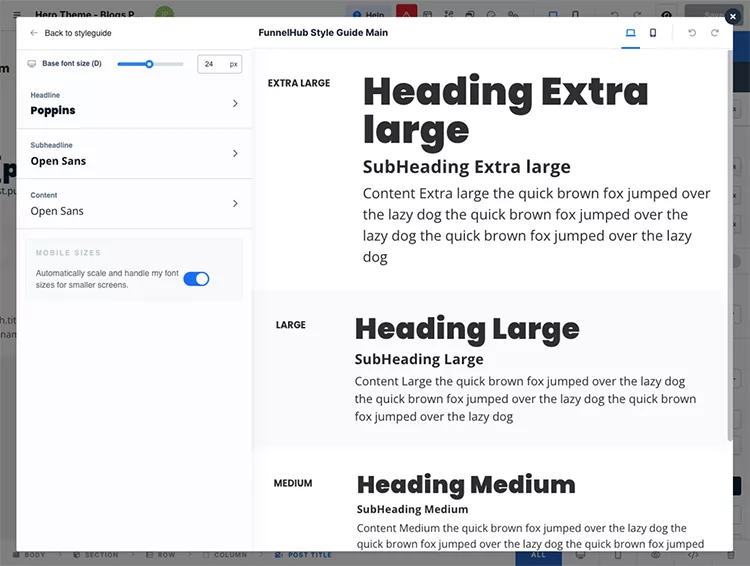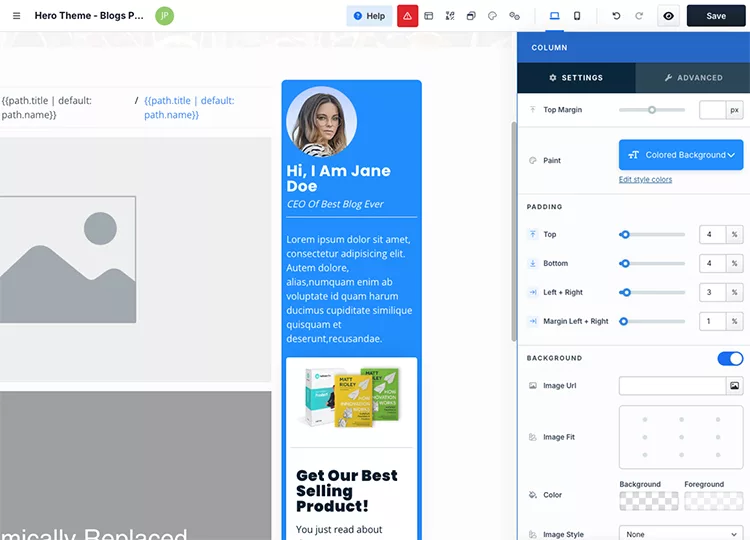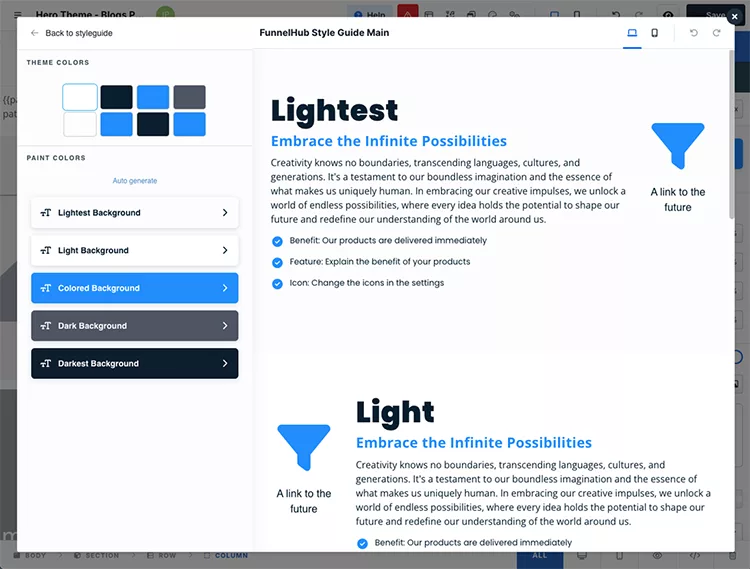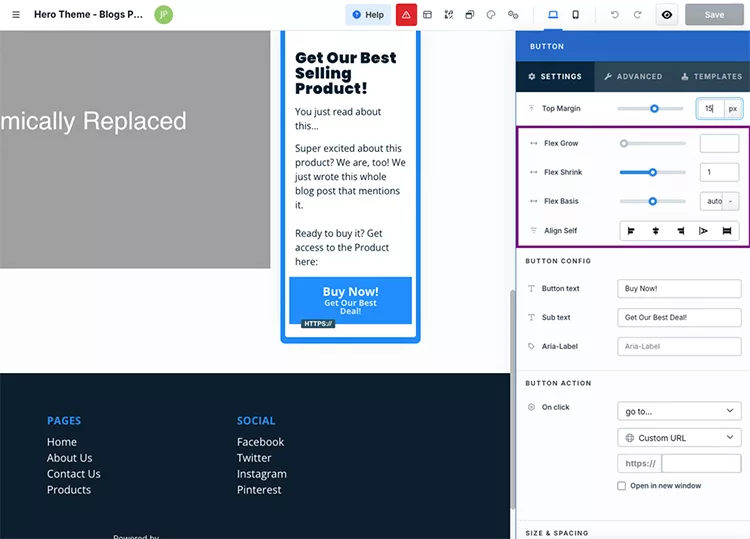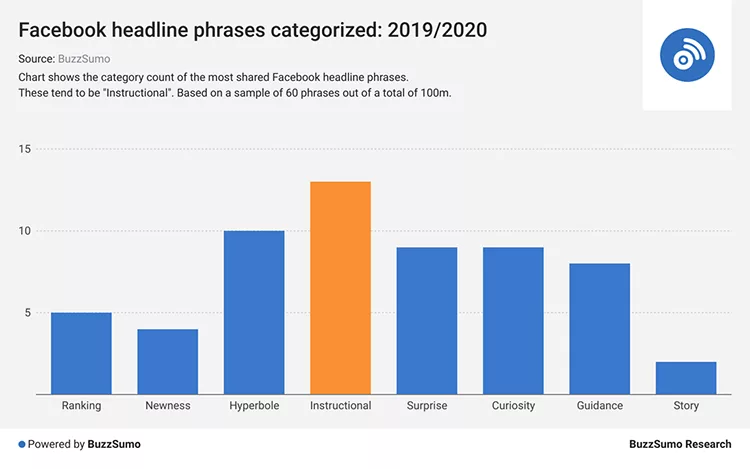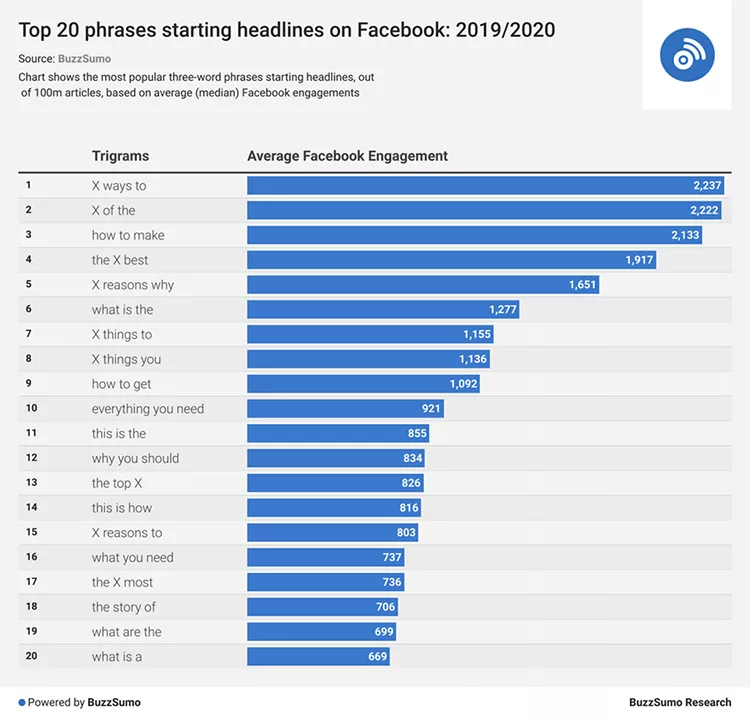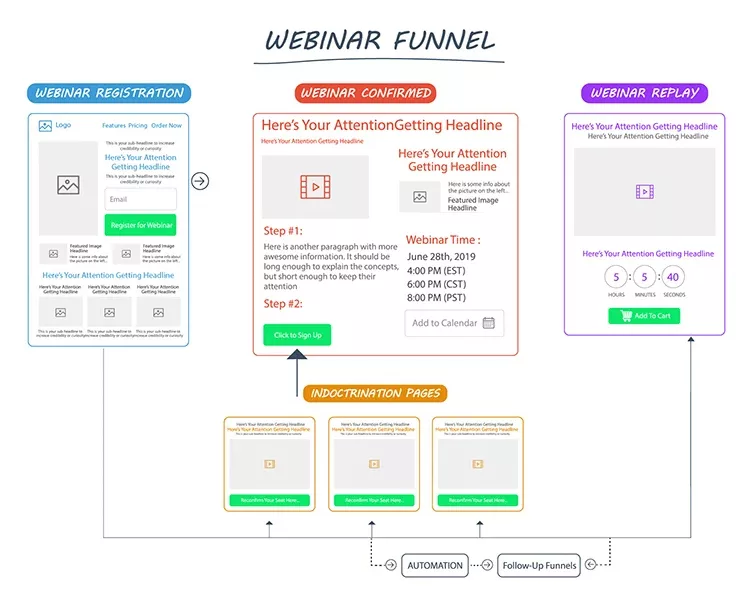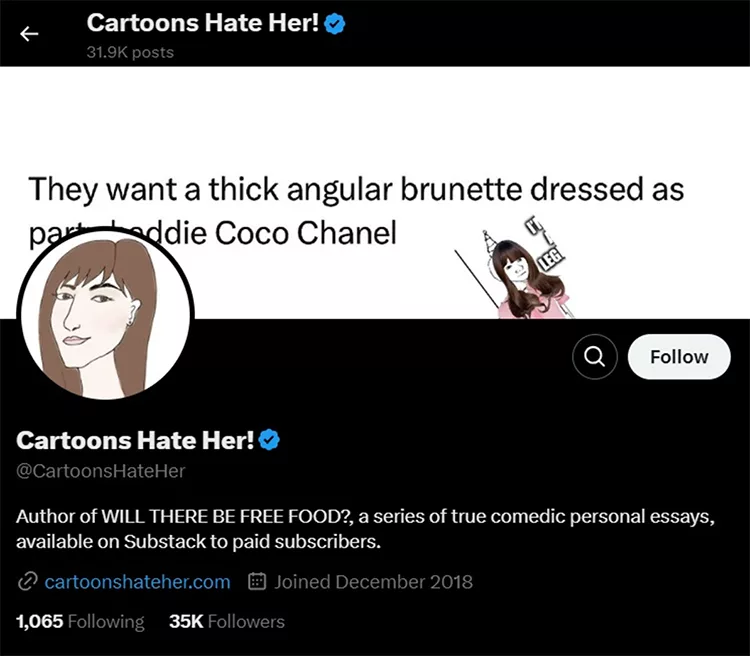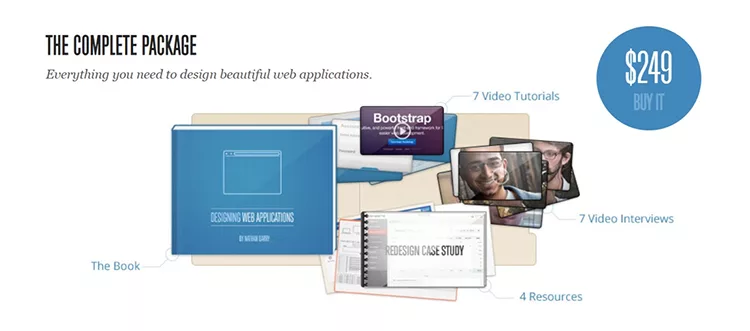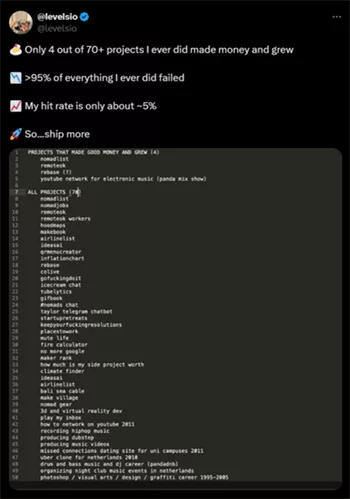Our view at Stack - ClickFunnels was founded by an online marketing legend Russell Brunson and it offers several benefits for online businesses and marketers:
- Time and Cost Savings: Efficiently create sales funnels without extensive development efforts.
- Maximized Conversions: Test offers, copy, and images to enhance conversions.
- Specific Landing Pages: Generate highly targeted landing pages.
- Predictable Pipeline: Create consistent, predictable sales paths.
- Increased Sales: On average, it boosts sales of lesser products by 15%
The post Start Earning As A Content Creator appeared first on ClickFunnels.
So you want to be a content creator?
Until the rise of social media platforms like YouTube, Instagram, and TikTok, the idea of making money from creating content would have seemed impossible.
But not anymore.
In fact, a 2019 study on Statista revealed that 30% of children in the U.S. and U.K., aged 8 to 12, dreamed of becoming vloggers or YouTubers – more than those aspiring to traditional careers like astronauts or doctors.
But can you actually make money from being a content creator?
The answer is yes!
In many cases, being a content creator is more than just a side hustle – it can completely replace a traditional 9-to-5 job. In fact, ClickFunnels has already helped hundreds of entrepreneurs just like you monetize their content and even generate over $1 million from their channels.
In this blog, we’ll break down the 11 most profitable ways to make money as a content creator.
Ready? Let’s go!
What is a Content Creator?
A content creator is someone who produces and shares original material, such as videos, articles, podcasts, or images with the intent of engaging an audience.
Usually, content creators aim to earn revenue in the process.
The birth of content creators began with the rise of early internet platforms like Blogger, MySpace and YouTube in the mid-2000s. YouTube, launched in 2005, became a game-changer by allowing users to upload videos, grow audiences, and earn money through ad revenue.
Fast forward to today, and content creators are no longer limited to a few platforms. There is a wide range of apps, platforms, and websites you can choose to publish content on.
Here’s a breakdown of the major types of content platforms and their most well-known apps:
1. Video Platforms
- YouTube
- Vimeo
- Dailymotion
2. Social Media Platforms
- TikTok
- Snapchat
- X (formerly Twitter)
3. Podcasting Platforms
- Spotify
- Apple Podcasts
- Google Podcasts
- Stitcher
4. Streaming Platforms
- Twitch
- YouTube Live
- Facebook Gaming
- Kick
5. Blogging and Writing Platforms
- Medium
- Substack
- WordPress
- Tumblr
6. Membership and Crowdfunding Platforms
- Patreon
- Ko-fi
- OnlyFans
- Buy Me a Coffee
- Skool
How Much do Content Creators Make?
According to Exploding Topics, the average annual revenue for a full-time content creator is over $100,000.
But that doesn’t explain the full picture.
Statistics show it takes content creators an average of six and a half months just to earn their first dollar. It can then take as long as 17 months to start earning enough to support yourself and transition to full-time content creation.
But don’t let that put you off.
If you start now and consistently work towards your goals, there’s no reason why you can’t be successful and join the small percentage of content creators who are making 6 figures.
And you know what’s even better?
With content creation, there’s no limit to your earnings potential. You don’t need a “raise” or to find a new employer to take more cash home at the end of the month. At the highest end some of the world’s top creators, like MrBeast, have a reported income of between $500 million to $700 million annually.
Let’s jump into 11 ways to make money with your content to see how you can get started.
11 Ways to Make Money as a Content Creator
1. Affiliate Marketing
Affiliate marketing is a monetization strategy where you earn a commission by promoting products or services and generating sales through your unique affiliate link.
You can make money with affiliate marketing by partnering with companies that align with your niche and audience. Earnings typically range from 5% to 30% of the product price, though some companies offer even higher commissions for premium products or subscription-based services. The more engaged your audience and the higher the sales volume, the greater your earning potential.
The most profitable platforms for affiliate marketing include:
- YouTube: Create product review videos, unboxings, or tutorials that include affiliate links in the video description.
- Instagram: Share visually appealing photos or short reels featuring the product and include affiliate links in your bio or swipe-up links in stories.
- TikTok: Post engaging, short-form videos demonstrating the product in action or highlighting its benefits, and share your affiliate link in your profile bio.
- Blogs and Websites: Write detailed articles or listicles about the product, including affiliate links within the content or banners on your site.
- Podcasts: Mention affiliate products during episodes and provide listeners with a unique affiliate code or a link in the show notes.
- Pinterest: Pin eye-catching images of the product linked to your affiliate blog post or directly to the product’s purchase page.
- Twitter (X): Share concise, compelling tweets about the product’s benefits with your affiliate link included.
- Email Newsletters: Recommend products directly to your subscribers, including affiliate links for easy access.
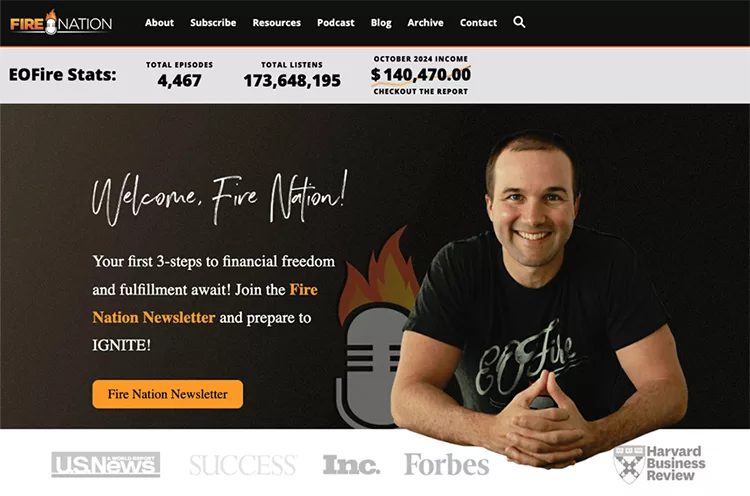
$1 Million Marketing ClickFunnels as an Affiliate
John Lee Dumas, host of the podcast Entrepreneur on Fire since 2012, has inspired thousands of entrepreneurs to build and grow their businesses. Through his podcast, he shares actionable insights and tools, including how to use ClickFunnels to sell products online through sales funnels. By leveraging his unique affiliate link, John was one of the first affiliates to generate $1 million in commissions simply by recommending ClickFunnels to his audience.
Click here to see how you can earn 40% monthly recurring commission by becoming a ClickFunnels affiliate.
2. UGC
User-generated content (UGC) involves creating content for brands to promote their products or services.
You can make money as a UGC creator by partnering with brands that pay for your content to use in their marketing campaigns. Unlike traditional influencer deals, UGC focuses on creating content for the brand’s platforms rather than promoting it on its own. Typically you’ll need good video editing skills or understand how to make viral content.
3. Influencer Marketing
Influencer marketing involves collaborating with brands to promote their products or services through your own social media channels.
You can make money as an influencer by creating sponsored posts, videos, or stories that showcase a brand’s offerings to your followers. Micro-influencers, with 10,000 to 50,000 followers, are particularly in demand because their audiences tend to be more engaged and niche-specific.
Some of the most profitable platforms to start building a following include:
- Instagram: Share sponsored posts or stories featuring the brand’s products, including swipe-up links or tagged shopping features.
- TikTok: Partner with brands to create engaging, trend-focused videos that highlight their products in a creative way.
- YouTube: Film longer-form sponsored content, such as product reviews or integrations, to promote the brand to your subscribers.
- Twitter (X): Tweet endorsements, threads, or links to brand promotions, leveraging your influence in specific conversations.
- LinkedIn: Collaborate with B2B companies to create posts that align with professional audiences, showcasing tools or services.
4. Selling Digital Products
Selling digital products involves creating valuable resources for a specific niche or audience and offering them for purchase online.
You can make money by identifying the needs of your audience and developing products like ebooks, templates, presets, designs, or other downloadable tools. These products often require upfront effort to create but can generate passive income over time, as they are easily scalable with no inventory or shipping costs.
You’ll continue to generate new sales by creating viral or useful content that gets spread via word-of-mouth and platform-specific algorithms.
5. Membership Sites and Exclusive Content
Membership sites are similar to digital products in terms of niche selection, but they offer a different value proposition.
Instead of one-time purchases, you can bundle in perks like access to a private community of like-minded individuals, weekly live calls, direct communication, or coaching calls with you. Membership sites are also ideal for sharing high-value insights or exclusive information tailored to your audience’s needs.
Some of the most common and well-known membership platforms include:
- Patreon: Create tiered subscription options for access to exclusive videos, articles, or community engagement.
- Substack: Offer exclusive newsletters or reports for paying subscribers in your niche.
- Kajabi: Build a full membership site with gated content like courses, guides, and live sessions.
- Mighty Networks: Foster a tight-knit community with additional paid content, events, or discussions.
- Discord: Set up a private server with exclusive access to insights, tips, or conversations for paying members.
- Skool: Create an online community platform where members can access exclusive content, courses, and discussions, all in one organized space.
6. YouTube
YouTube is one of the most versatile platforms for content creators, offering numerous ways to monetize your videos and grow a sustainable income.
You can make money on YouTube through ad revenue, which is generated by enabling ads on your videos once you meet the platform’s eligibility criteria (1,000 subscribers and 4,000 watch hours). Additionally, creators earn through sponsorships, affiliate links in video descriptions, product placements, and their own digital products.

6-Figure Business Publishing Air-Fryer Content
Cathy Yoder, the creator behind Empowered Cooks, has built a 6-figure business via a YouTube channel about air fryer recipes. Using a funnel built on ClickFunnels, Cathy sells thousands of dollars in cookbooks and membership subscriptions each month while also earning impressive ad revenue from YouTube advertisers – sometimes reaching $50,000 to $80,000 in a single month from the advertising alone.
Try ClickFunnels Free for 14 Days!
7. Coaching, Consulting, and Agency Services
Coaching, consulting, and agency services differ from other types of content creation because they’re monetized by a pre-existing business or expertise.
In this case, content serves as a powerful tool to attract new customers and generate leads rather than being the primary product.
By sharing valuable insights, how-to guides, or success stories through platforms like YouTube, blogs, or LinkedIn, you position yourself as an authority in your field. This content helps build trust and credibility, making potential clients more likely to hire you for personalized coaching sessions, consulting advice or done-for-you agency services.
8. Online Courses
Online courses are similar to digital products, but their growing popularity with the rise of online education makes them a category of their own.
As more people turn to the internet to learn new skills and gain knowledge, creating online courses has become a lucrative way for content creators to monetize their expertise. By developing structured, in-depth lessons on a specific topic, you can provide immense value to your audience while earning substantial income. You’ll then use a platform (or platforms) of your choice to spread awareness and create new customers.
9. Merchandising
Merchandising is a popular way for content creators to monetize their platforms, especially for those who grow large followings by sharing memes or viral content.
Instead of selling courses or educational resources, these creators turn to merchandise like t-shirts, mugs, stickers, or other branded items that resonate with their audience. By leveraging their unique style, humor, or message, they create products that fans are eager to buy, allowing them to generate revenue while strengthening their community.

$1 Million From Posting Memes About Grilling and Barbecuing
Paul Woolley’s I Love Grilling Meat is a perfect example of how merchandising can turn a social media following into a full-time business. He built a Facebook community of over 761,000 barbecue and grilling enthusiasts by sharing memes, tips, and content. Leveraging ClickFunnels, Paul launched a line of T-shirts, headgear, apron,s and BBQ merchandising, transforming his engaged audience into a $1 million business and earning him a ClickFunnels 2 Comma Club award.
Try ClickFunnels Free for 14 Days!
10. Blogs
Blogs might not be the first thing that comes to mind when you think of “content creation,” But they’re still a profitable way to generate income.
By focusing on a specific niche, optimizing for search engines and consistently publishing valuable written content, bloggers can attract a loyal readership. This audience can then be monetized through methods like display ads, affiliate marketing, sponsored posts, and even selling digital products or courses.
11. Licensing Your Content
Licensing your content involves granting other businesses or individuals the right to use your original work for a fee.
This strategy is particularly popular among creators who produce high-quality photos, videos, music, or even written content. For example, a photographer might license their images to stock photo websites, or a musician might license tracks for use in commercials or videos.
To succeed with licensing, you’ll use your content channels to showcase your portfolio and then drive traffic to platforms where your work is available for licensing. By consistently producing top-notch content that appeals to a specific audience or industry, you increase the chances of your work being discovered and licensed by others.
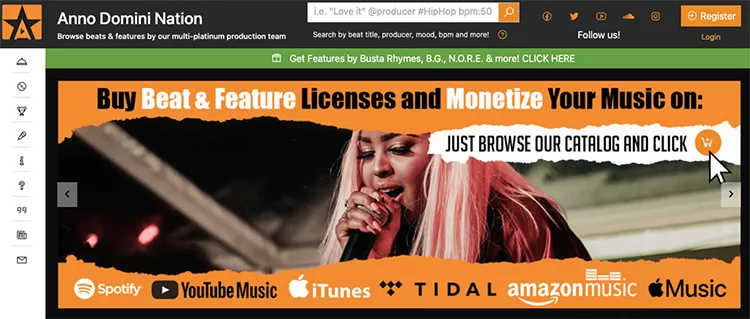
Turning Beats Into a Million-Dollar Business
Adrian Wood, founder of Anno Domini Nation, turned his instrumental tracks into a million-dollar success. He uses ClickFunnels to sell his beats directly to artists and also has a membership program, The Inner Circle, which provides fresh, commercial-licensed beats for use in songs, videos, and more. He’s one of hundreds to have earned a 2 Comma Club award for generating $1+ million via ClickFunnels.
Adrian drives traffic to his licensed content through YouTube, where he has over 129,000 subscribers and regularly shares beats and instrumentals, helping musicians and creators discover and purchase his work.
Try ClickFunnels Free for 14 Days!
Final Thoughts: Making Money From Content
Creating content is about more than just gaining followers – it’s about turning your hard work into real income.
From affiliate marketing to merchandising, licensing, and online courses, there are countless ways to monetize your creativity. The key is to choose a strategy that aligns with your skills and audience.
But don’t fall into the trap of creating followers, subscribers, and viewers by not making a cent.
With tools like ClickFunnels, you can start monetizing from day one, turning your passion into a sustainable income stream.
Thousands of content creators around the world use ClickFunnels to create landing pages, sales pages, membership sites, and online stores. Then, by just sharing a link in their bios and their content, they can quickly convert their traffic into cash.
Get started today!
Try ClickFunnels Free for 14 Days!
Thanks for reading Start Earning As A Content Creator which appeared first on ClickFunnels.
If Click Funnels is of interest and you'd like more information, please do make contact or take a look in more detail here.
Credit: Original article published here.
